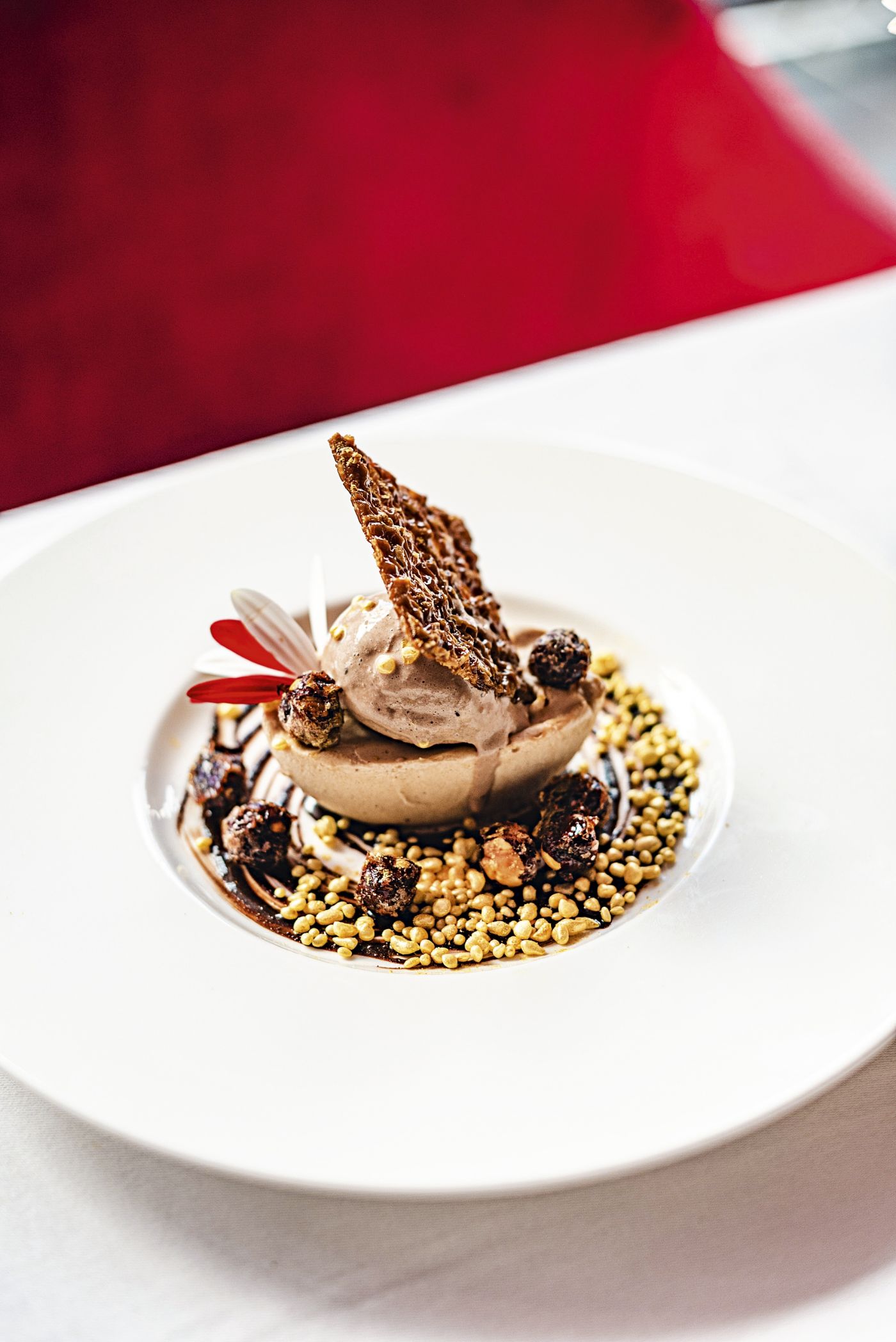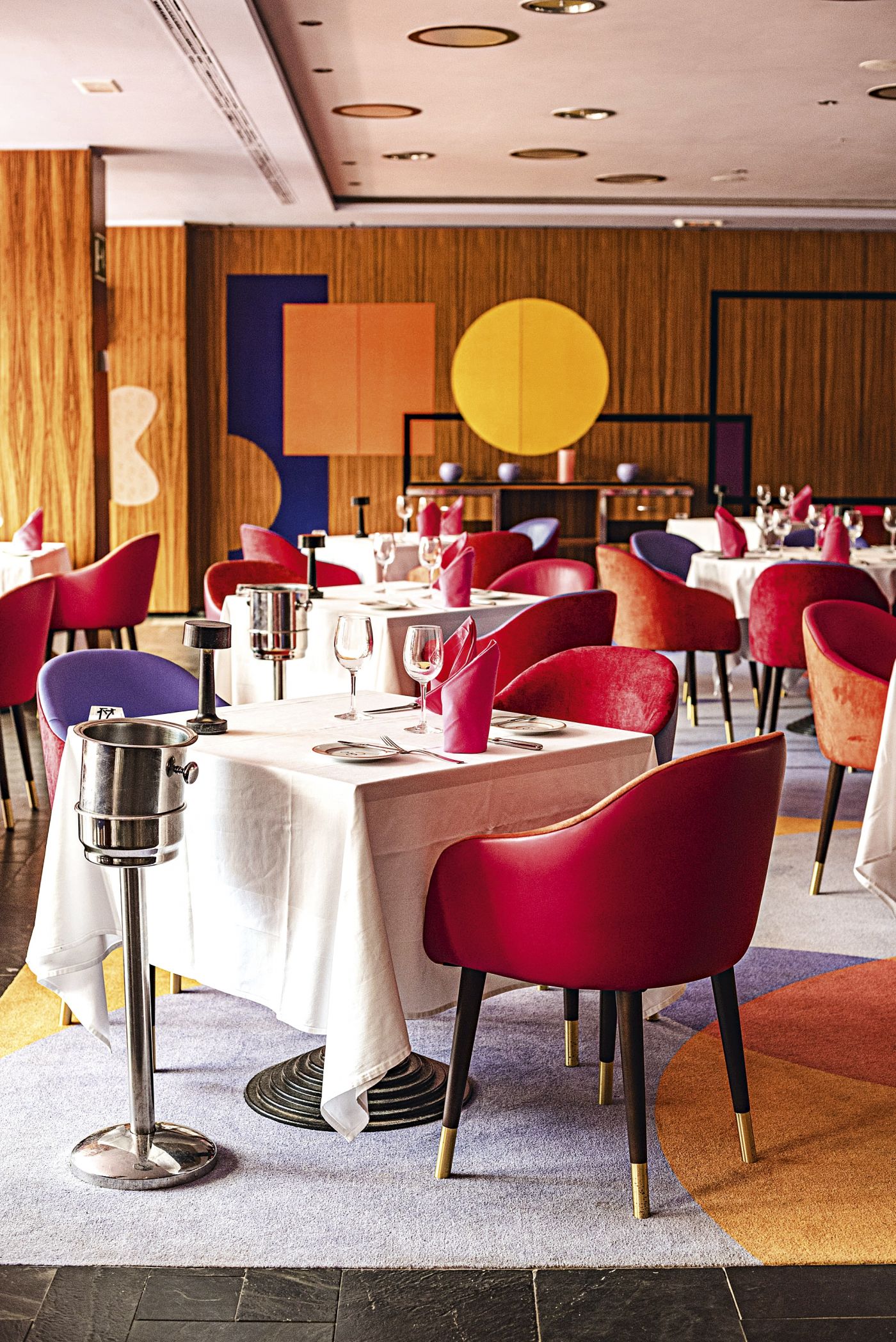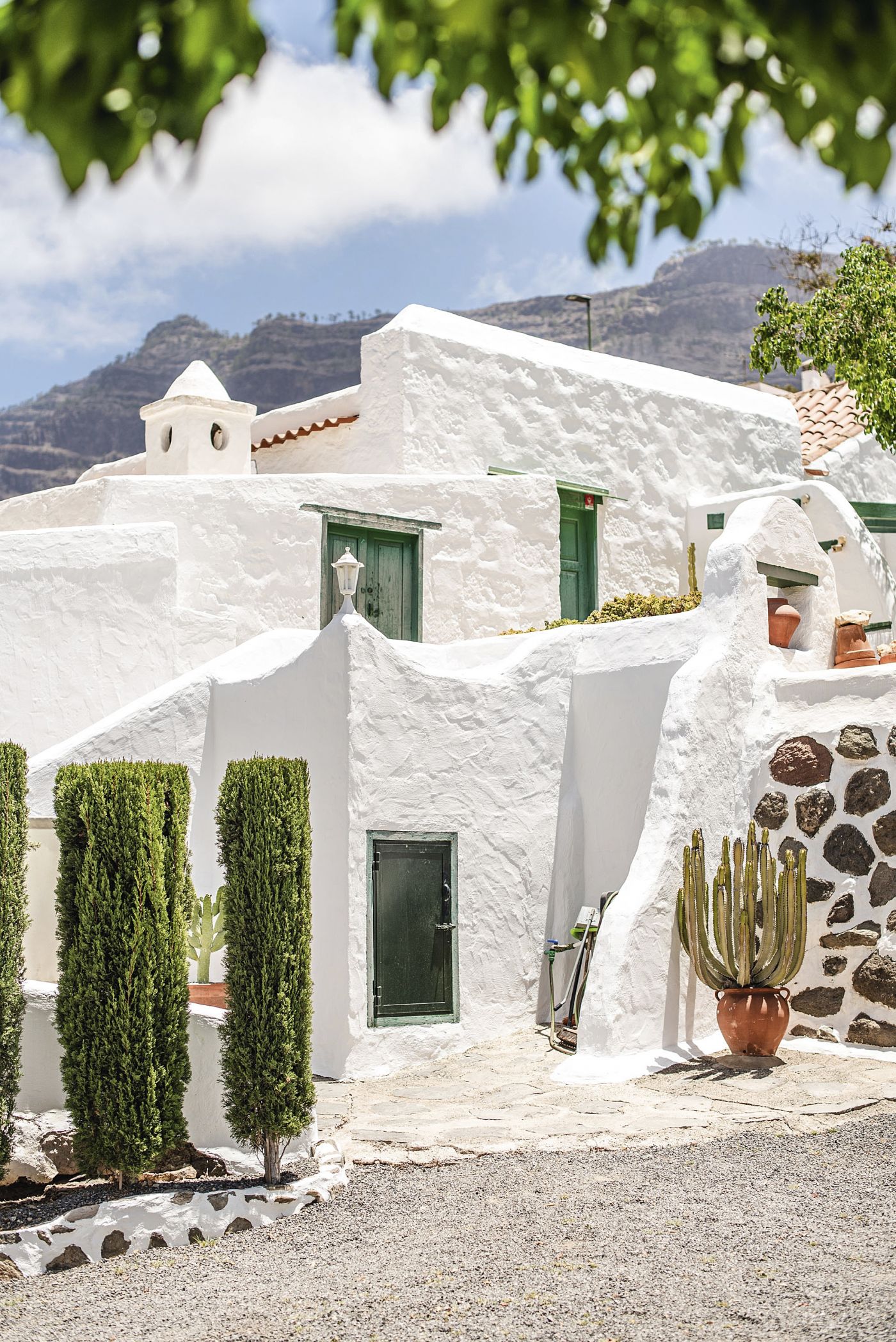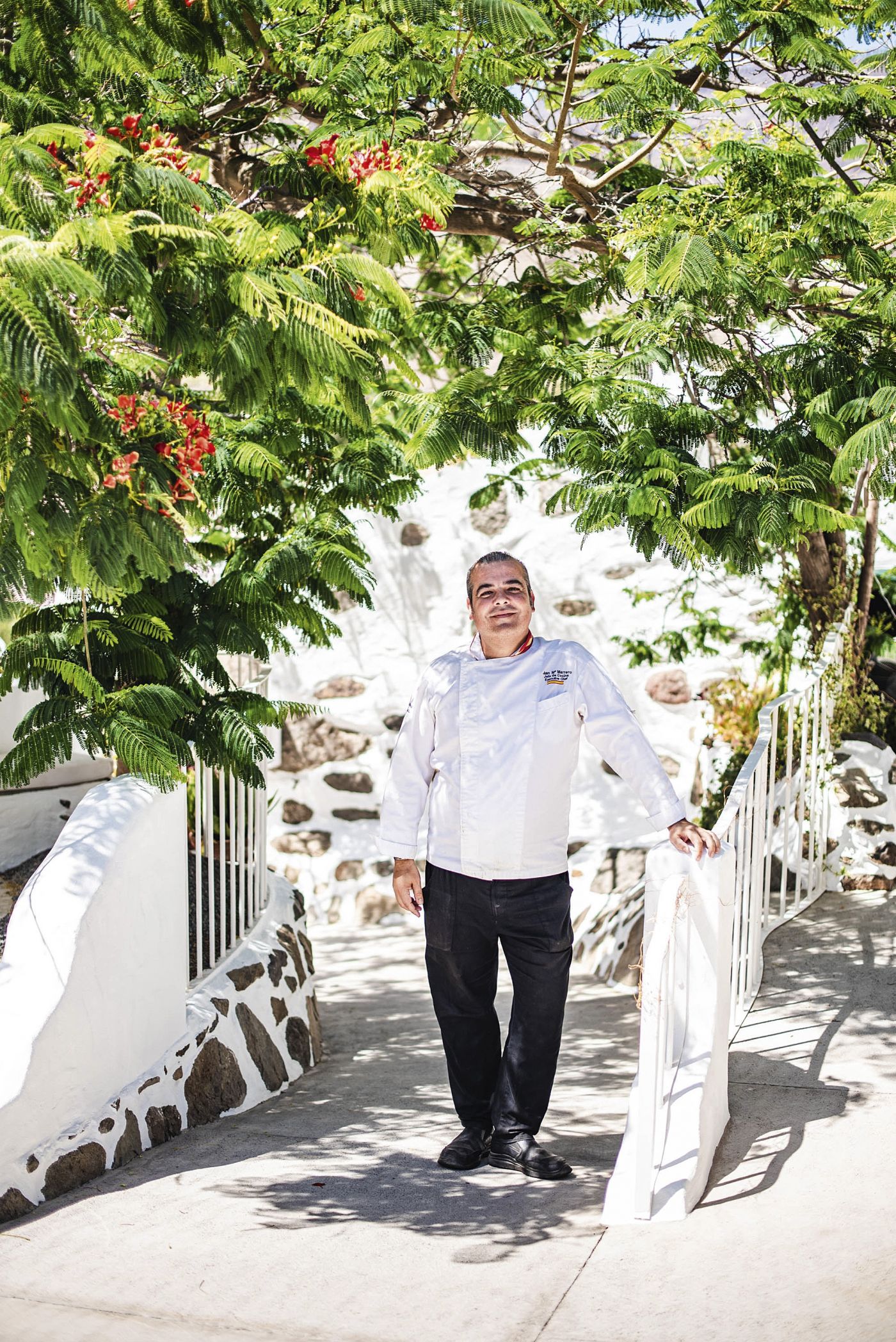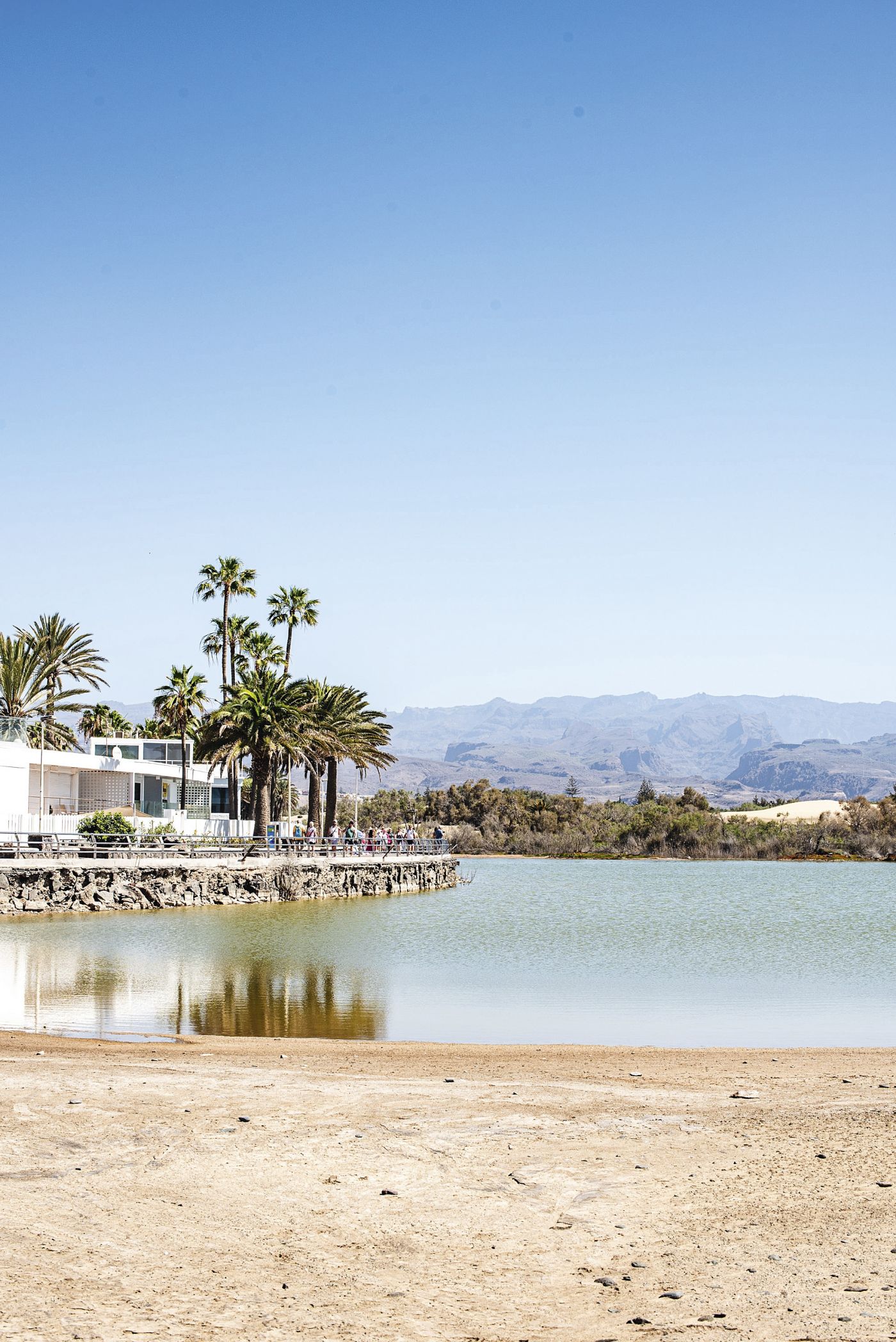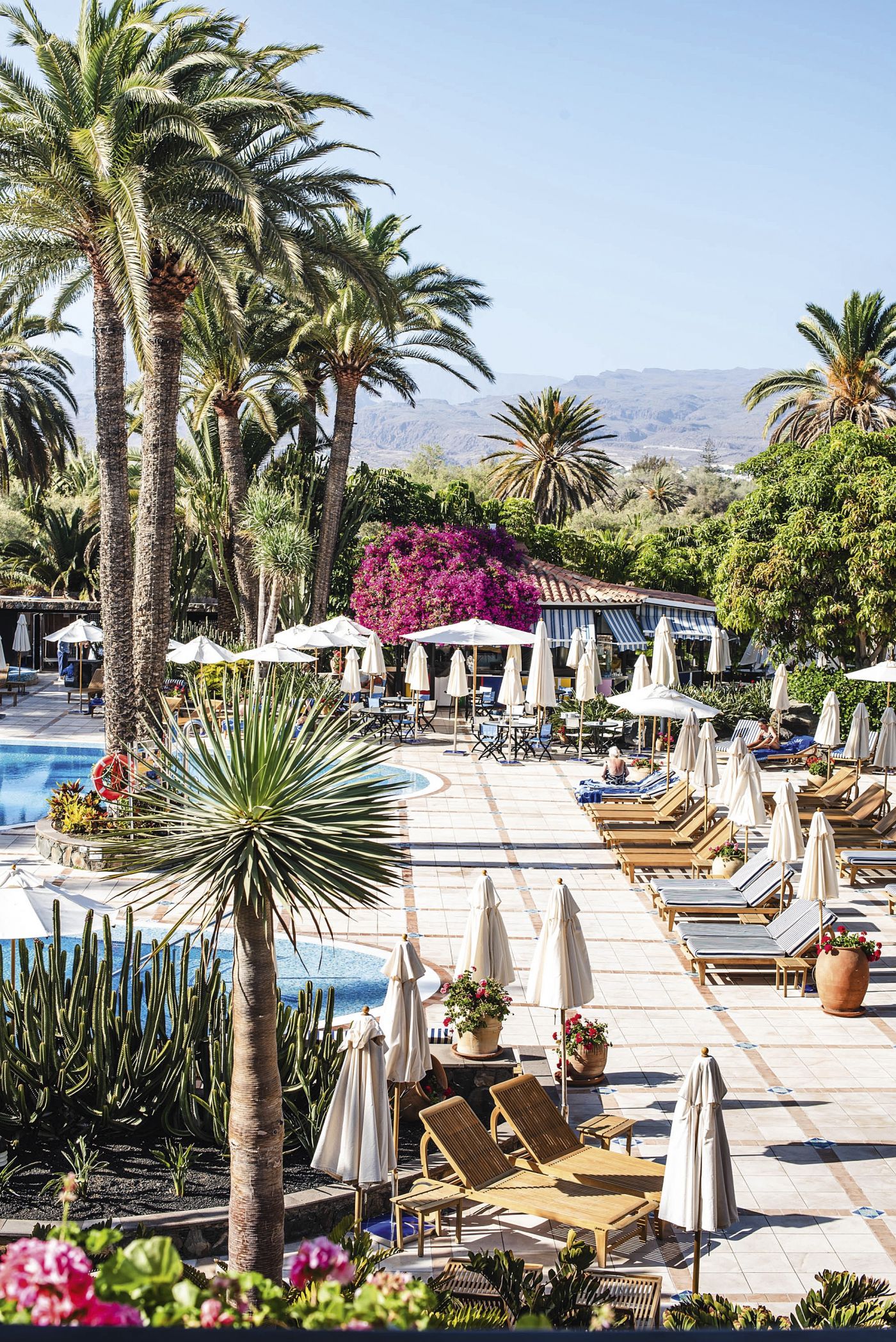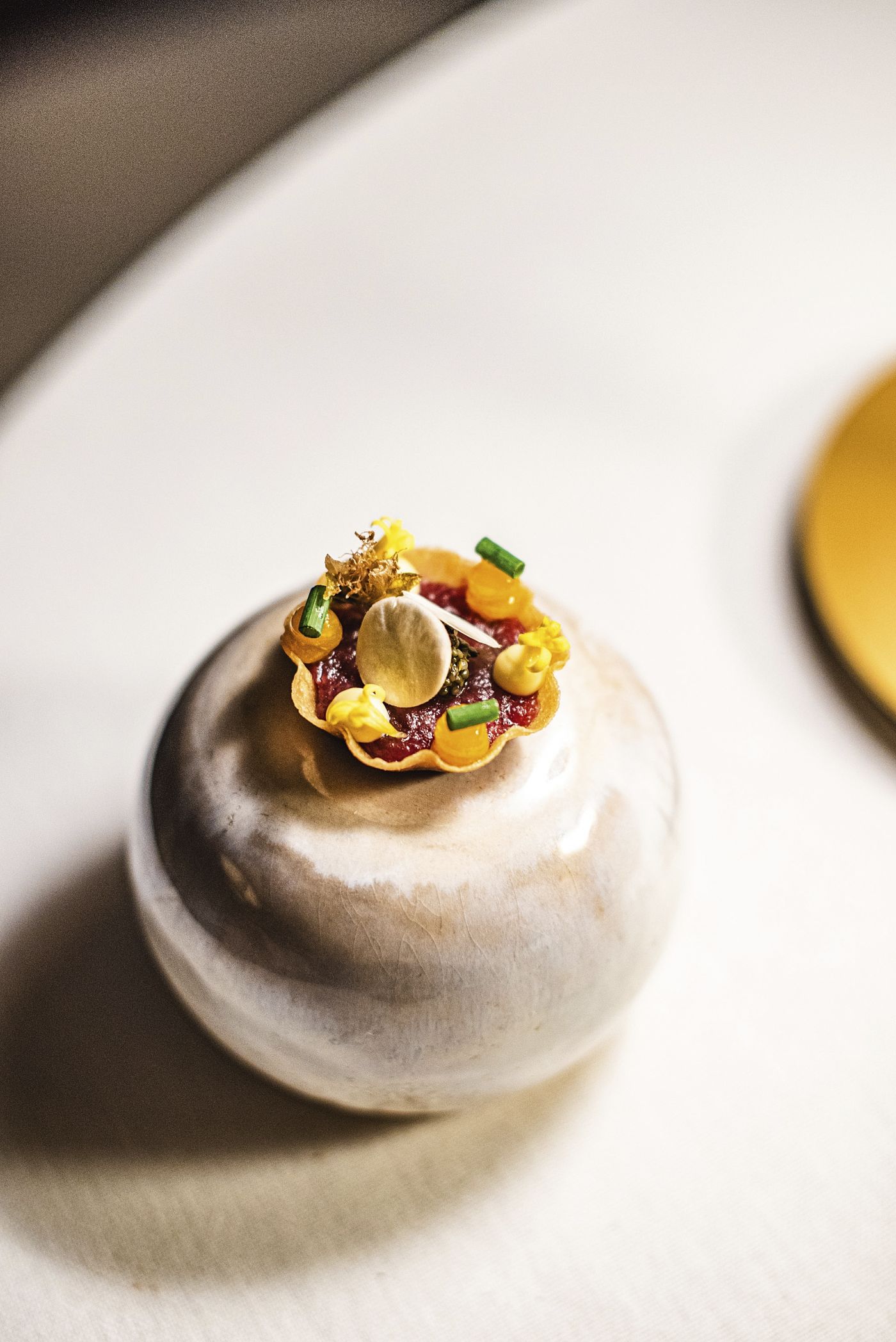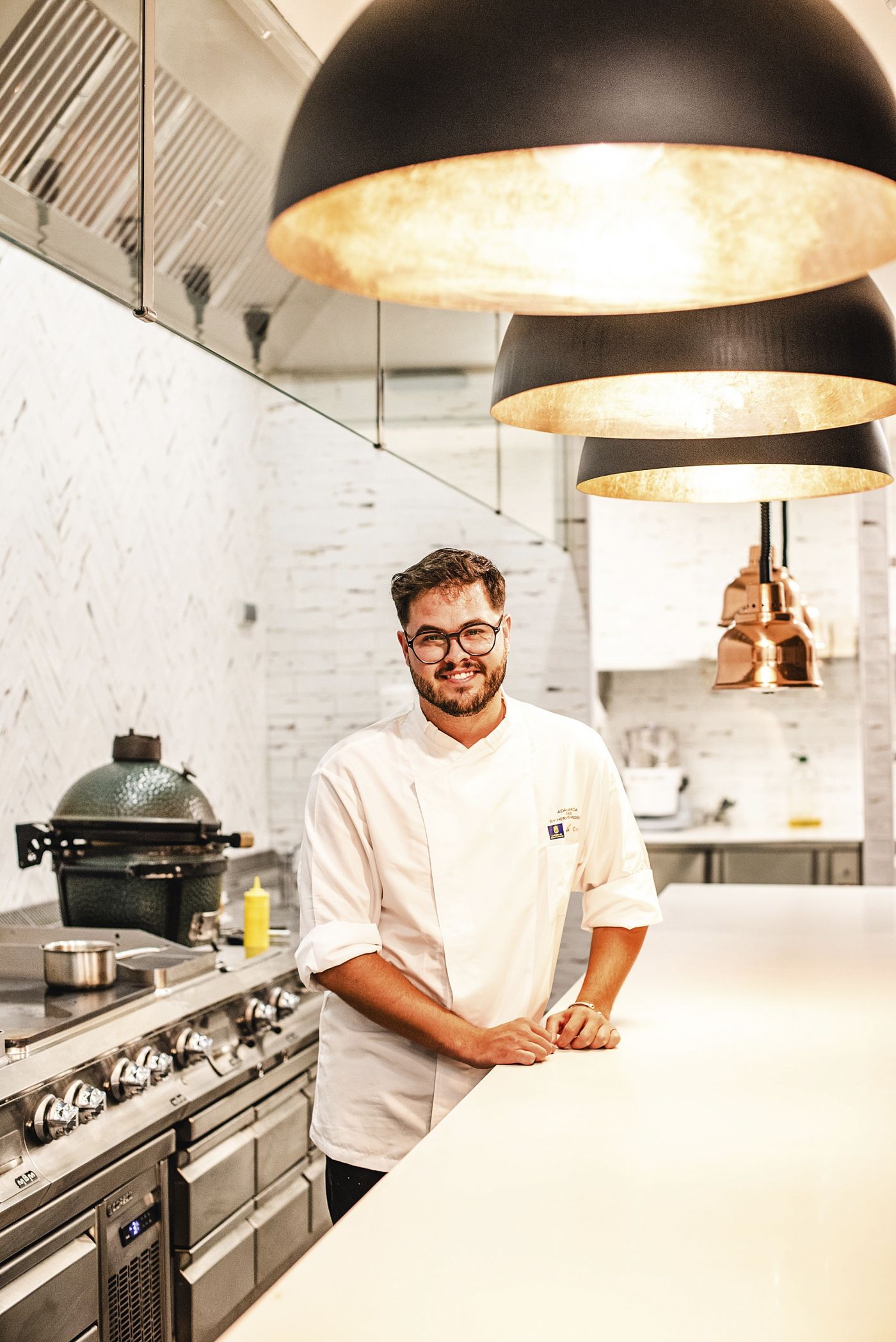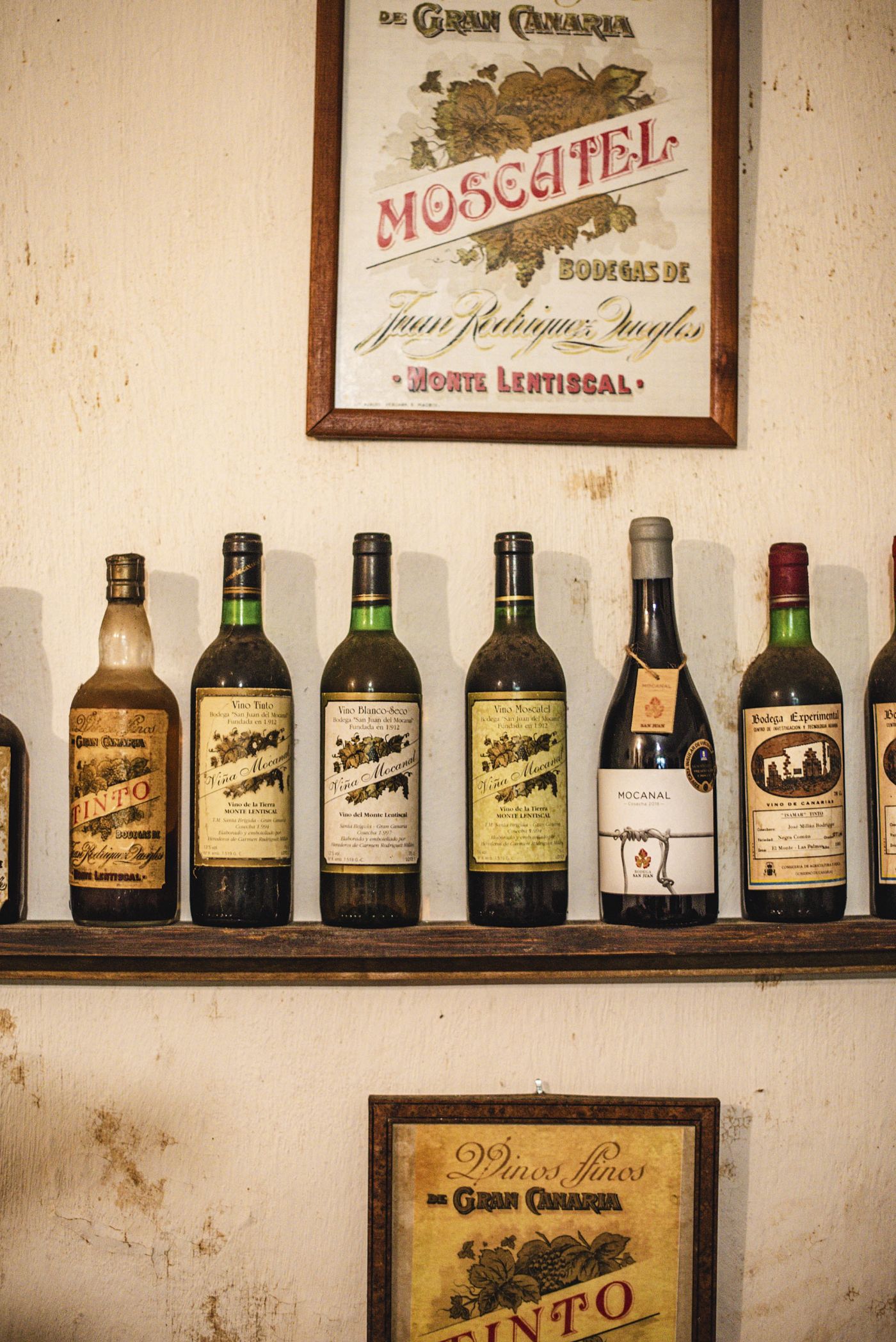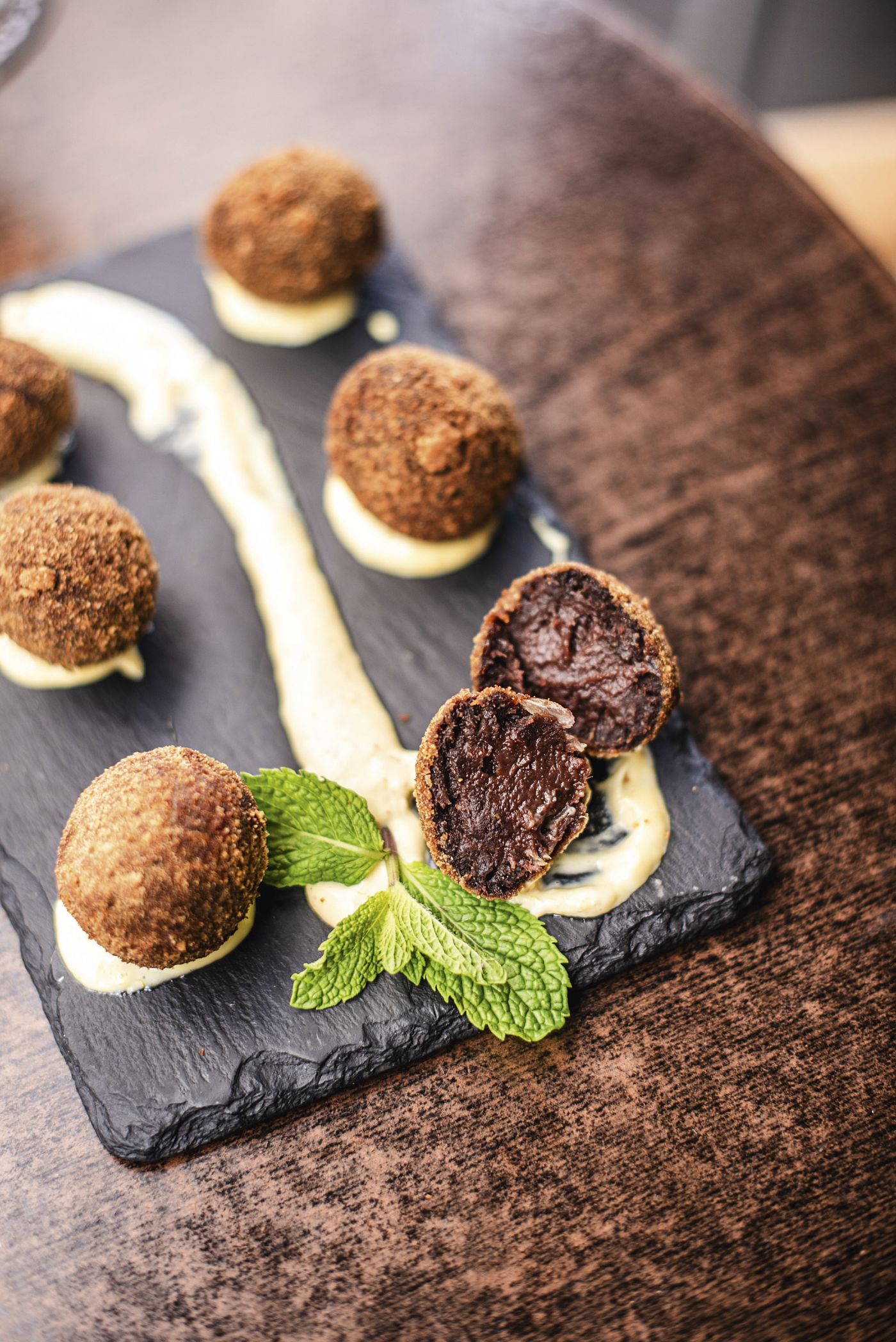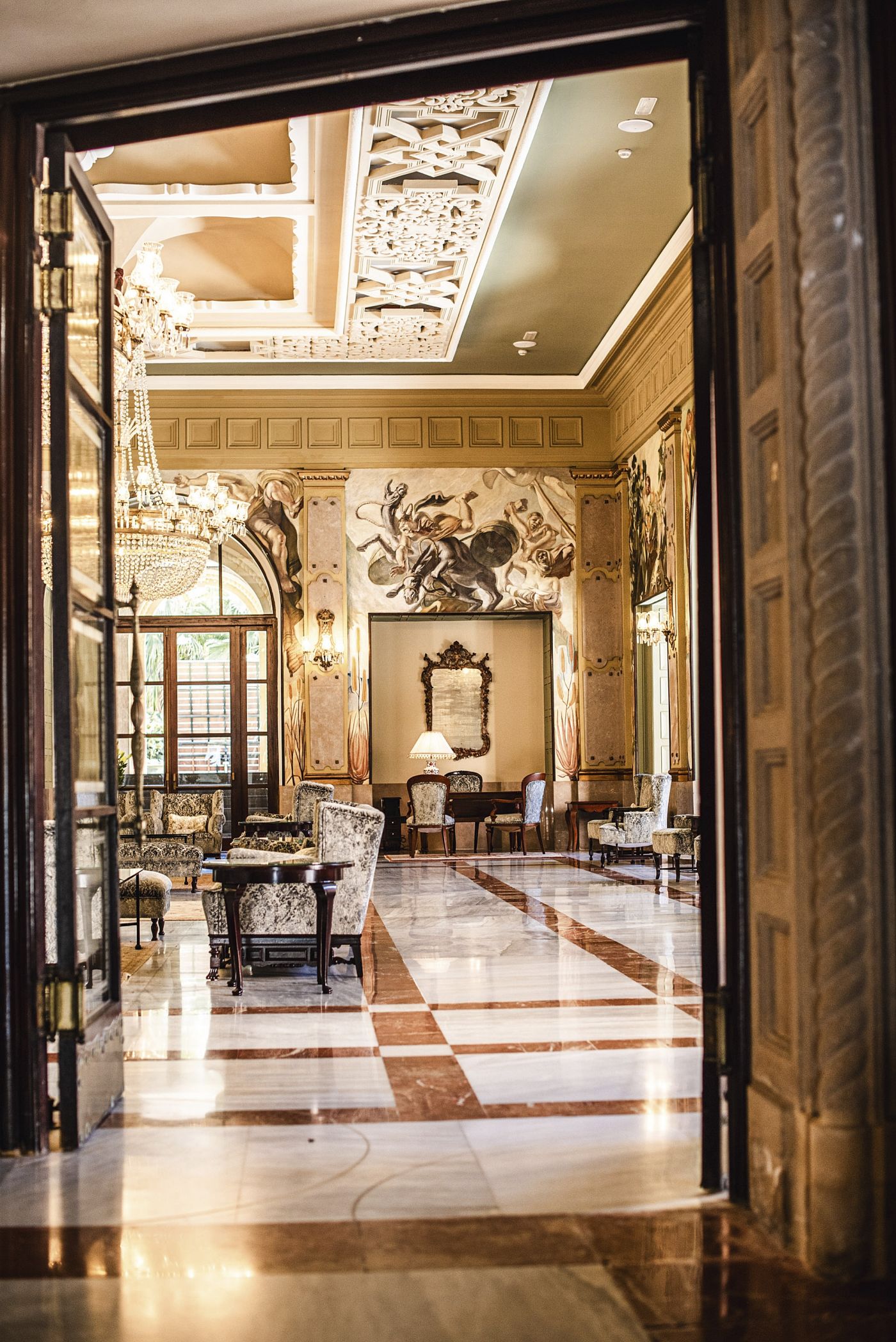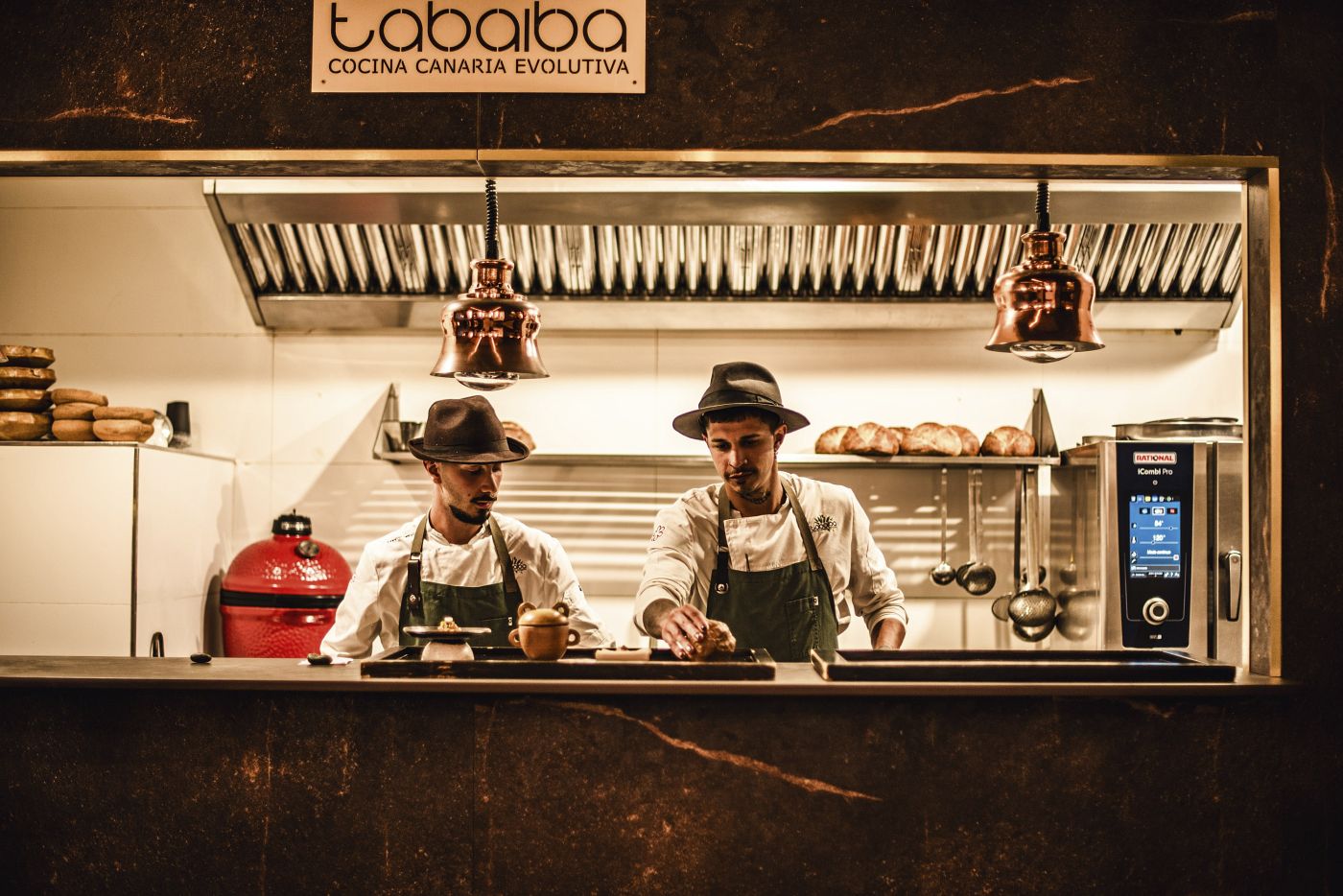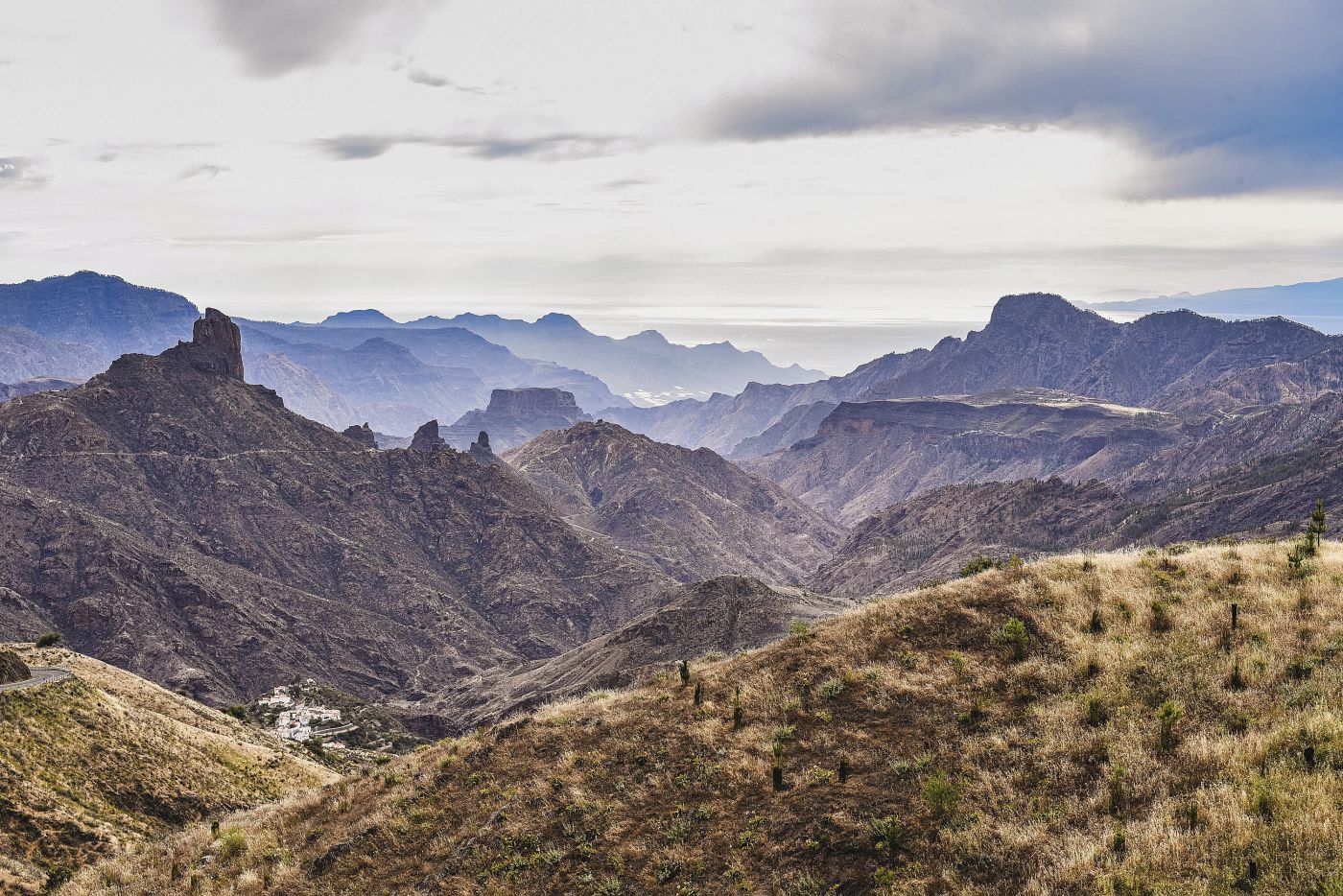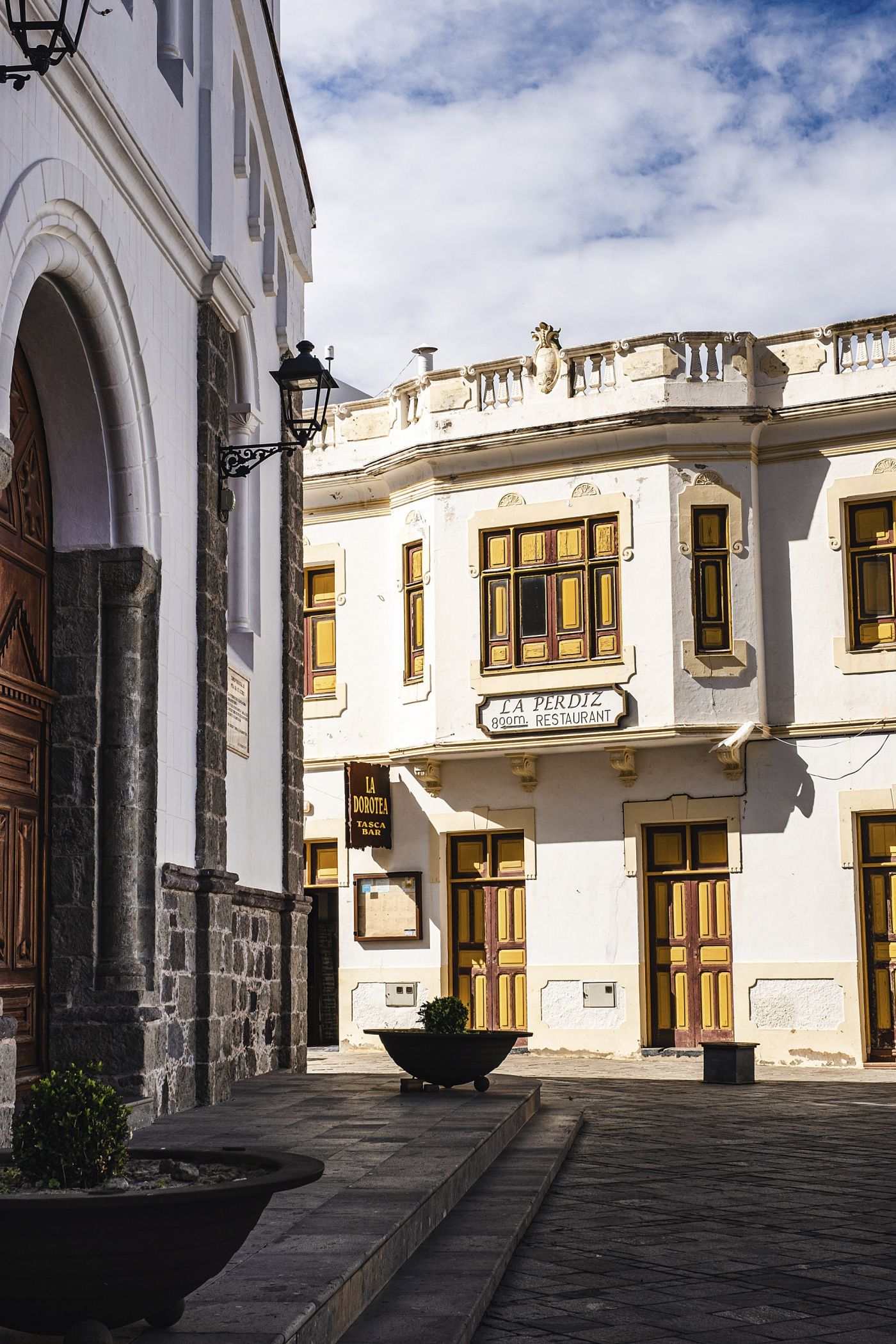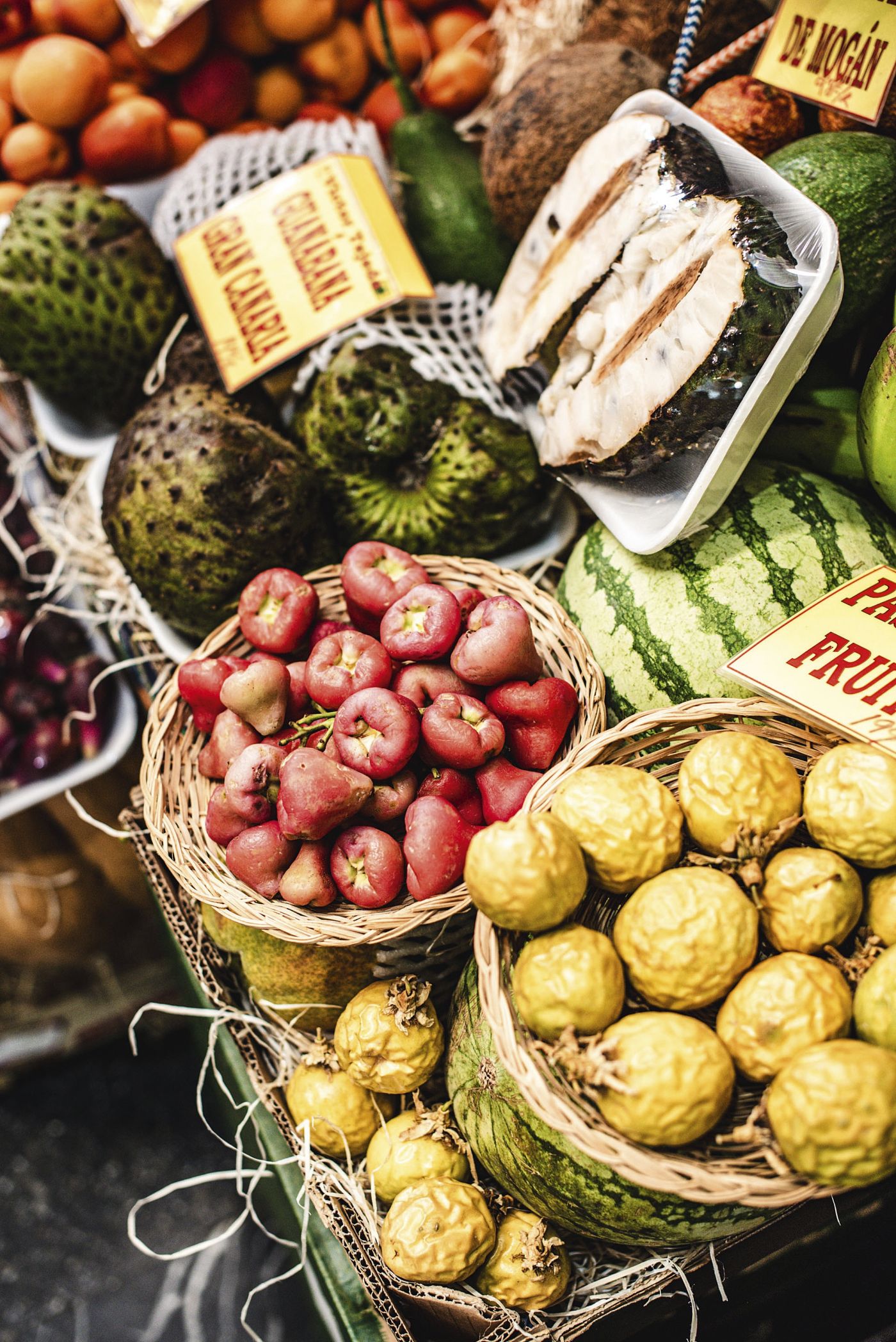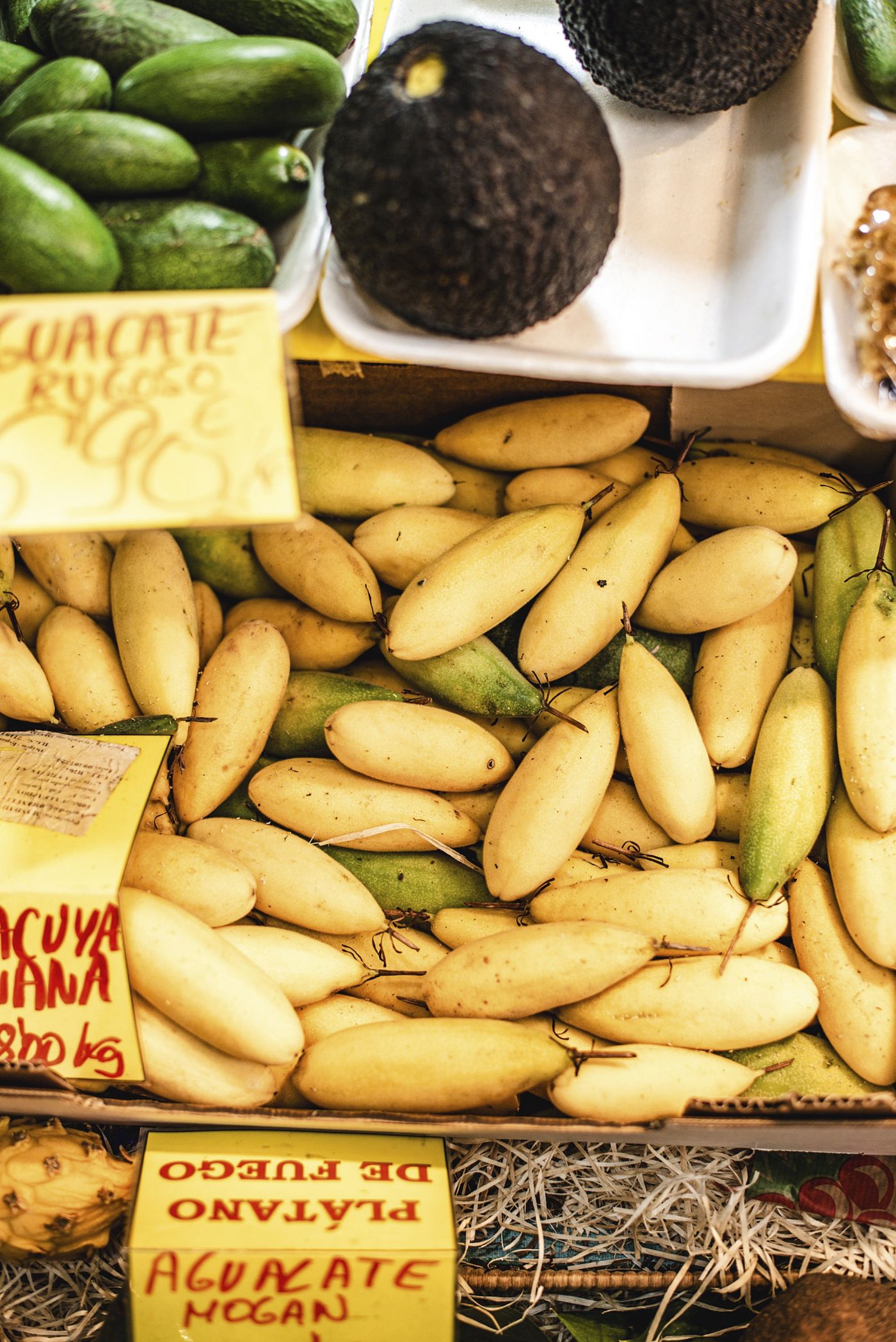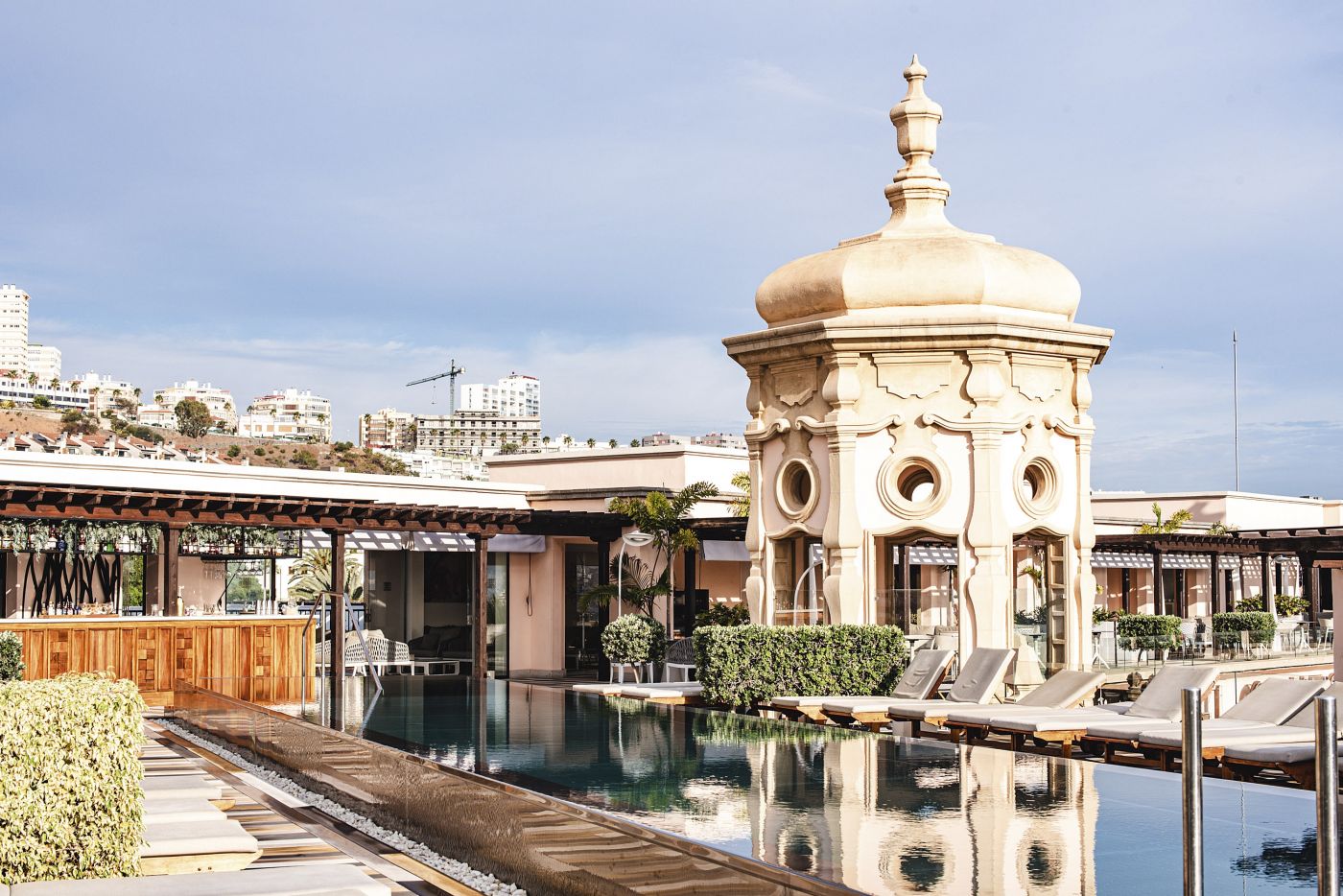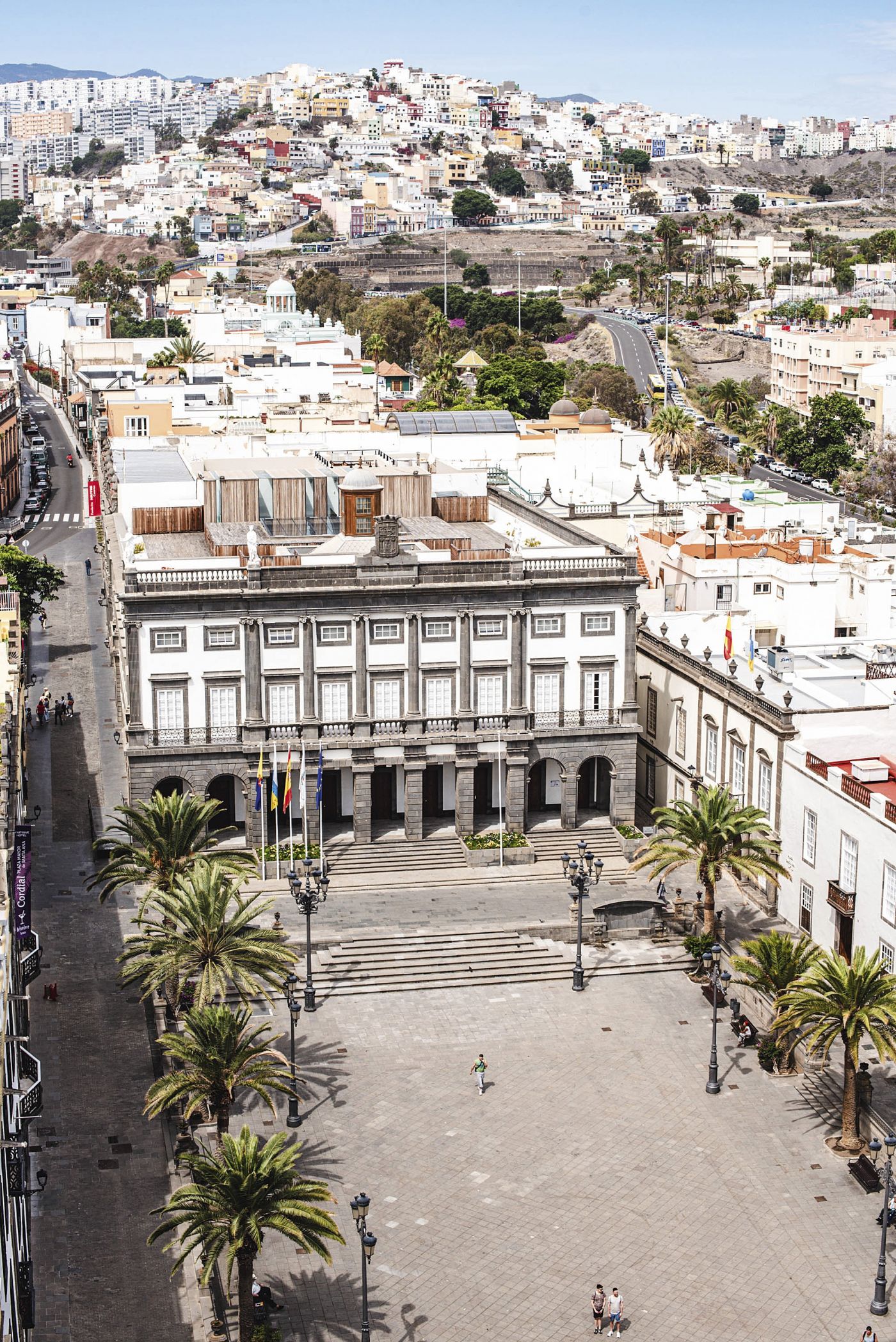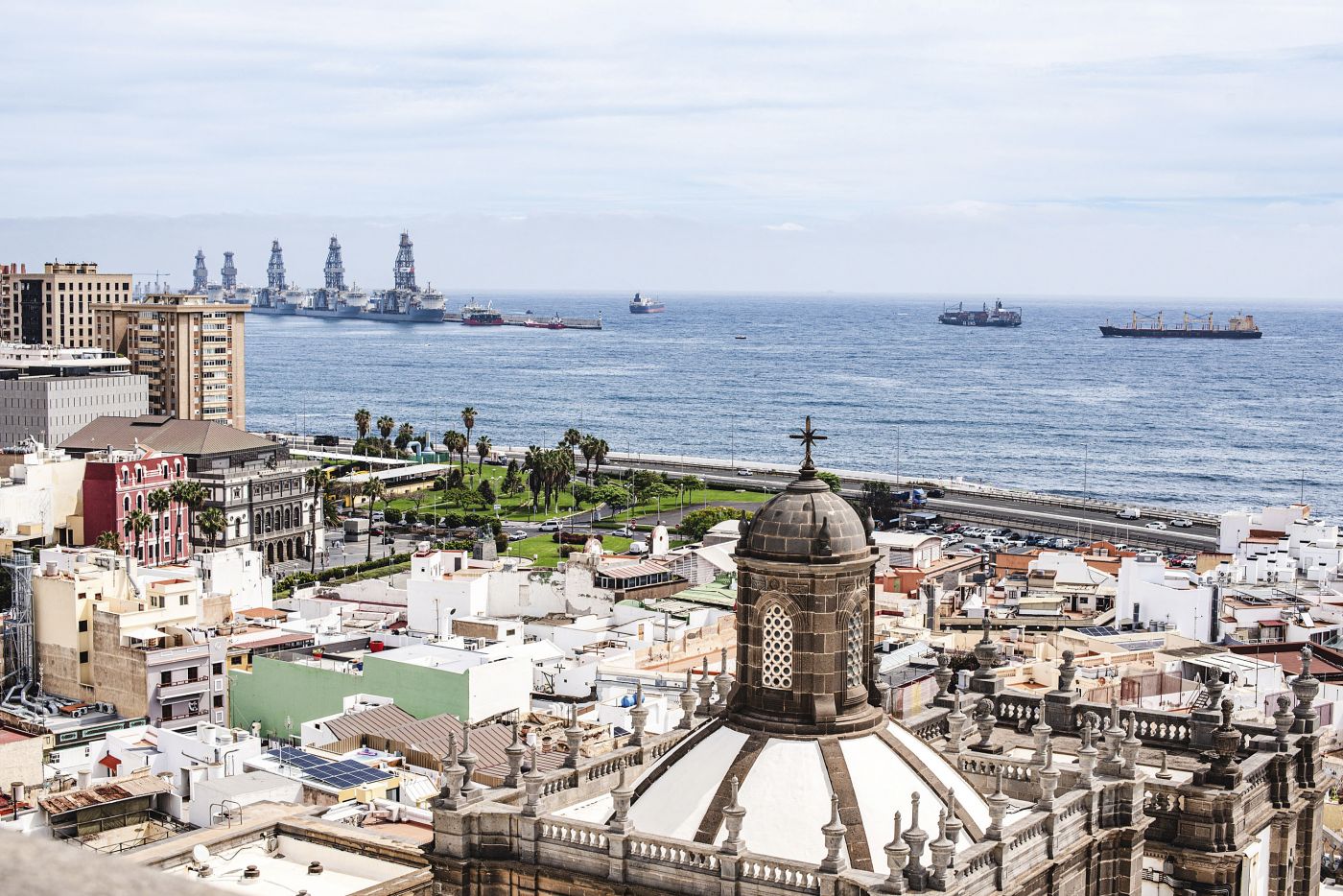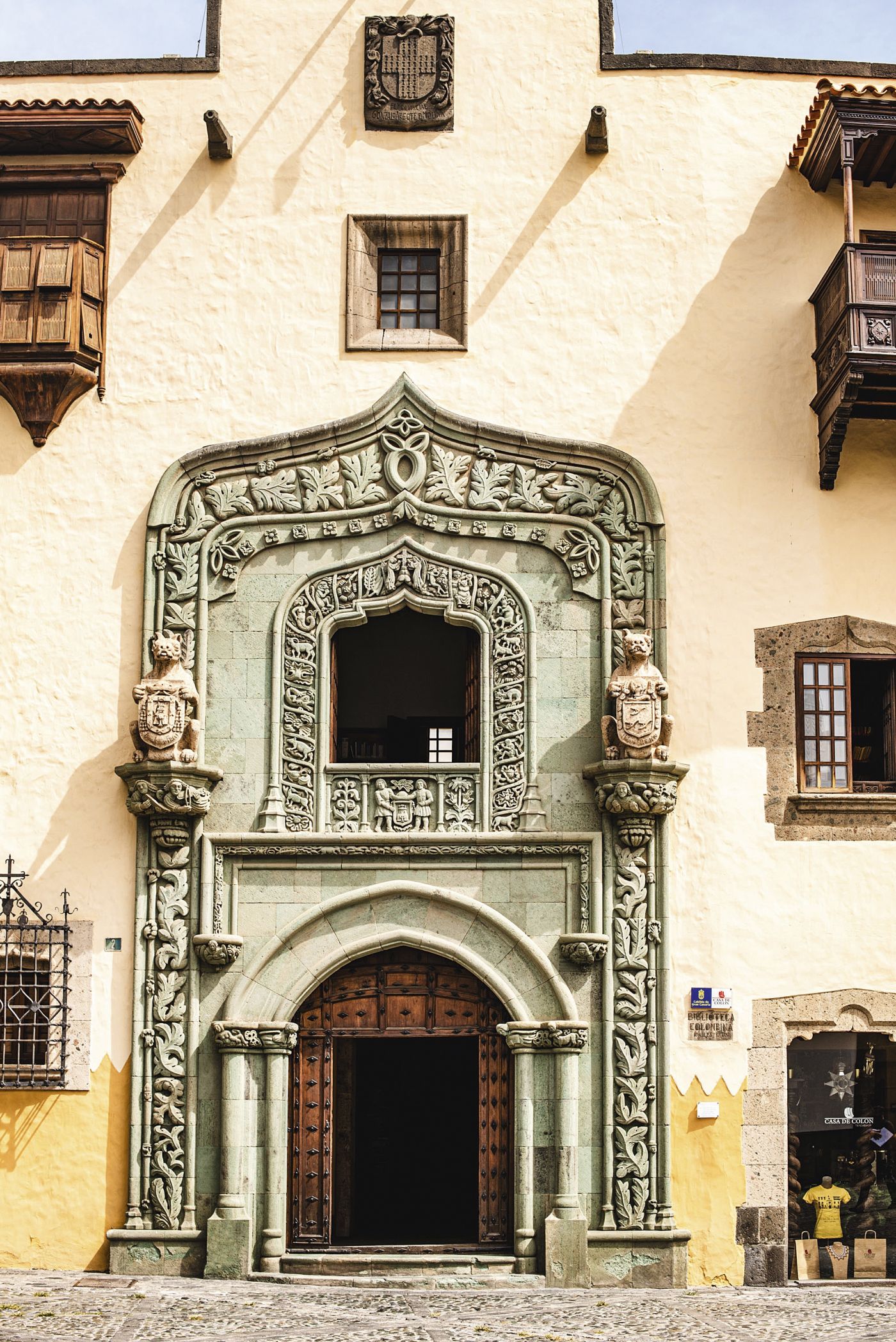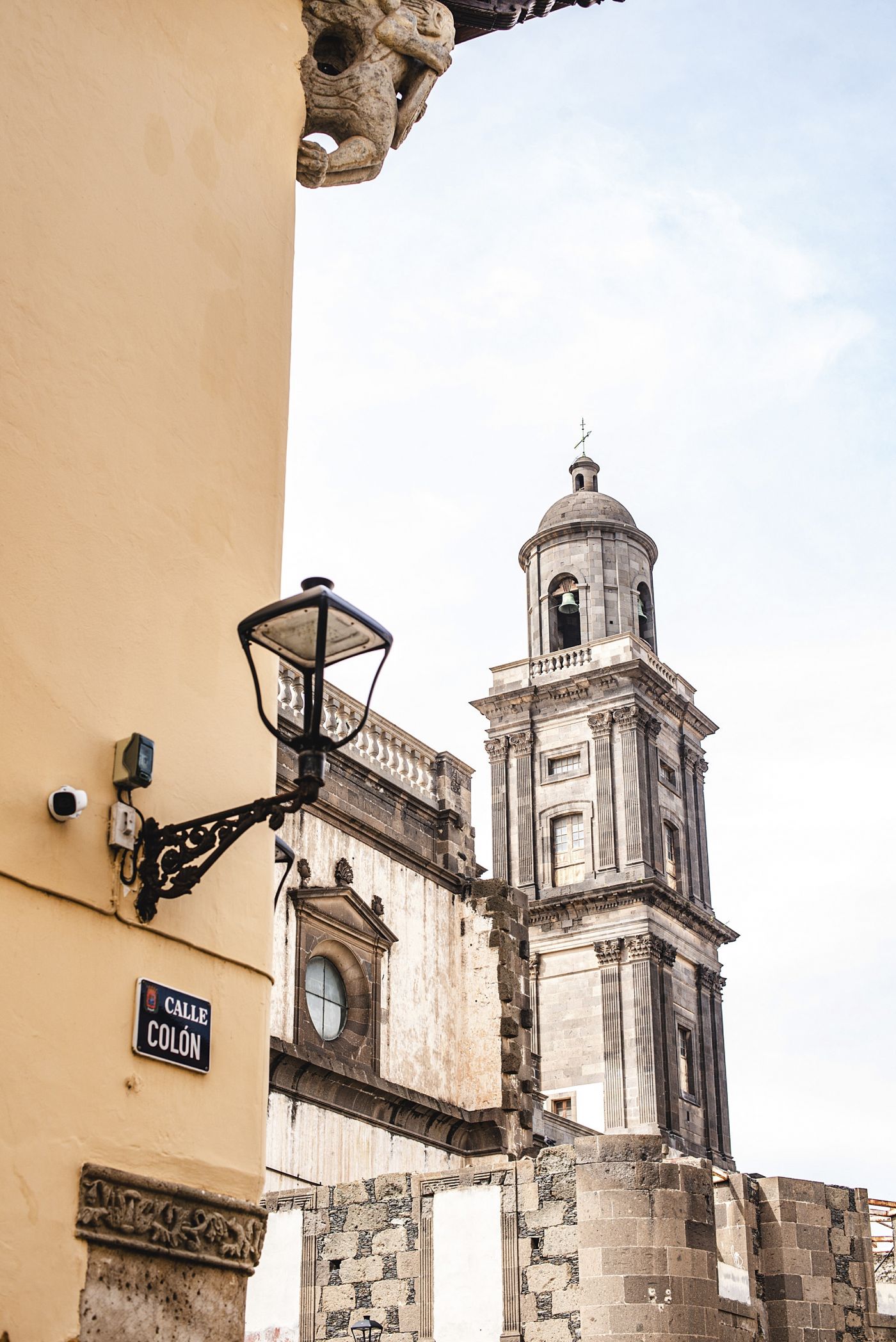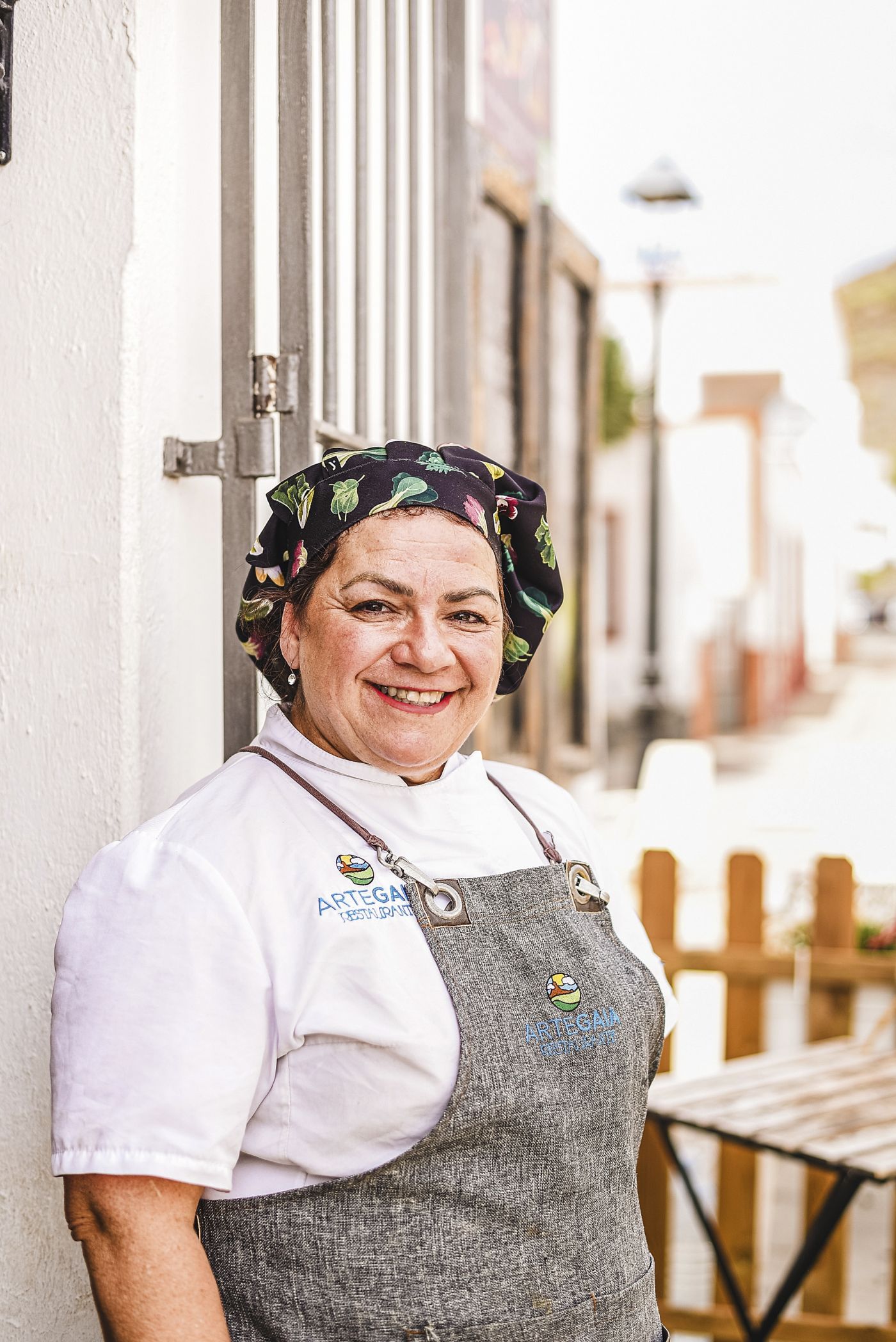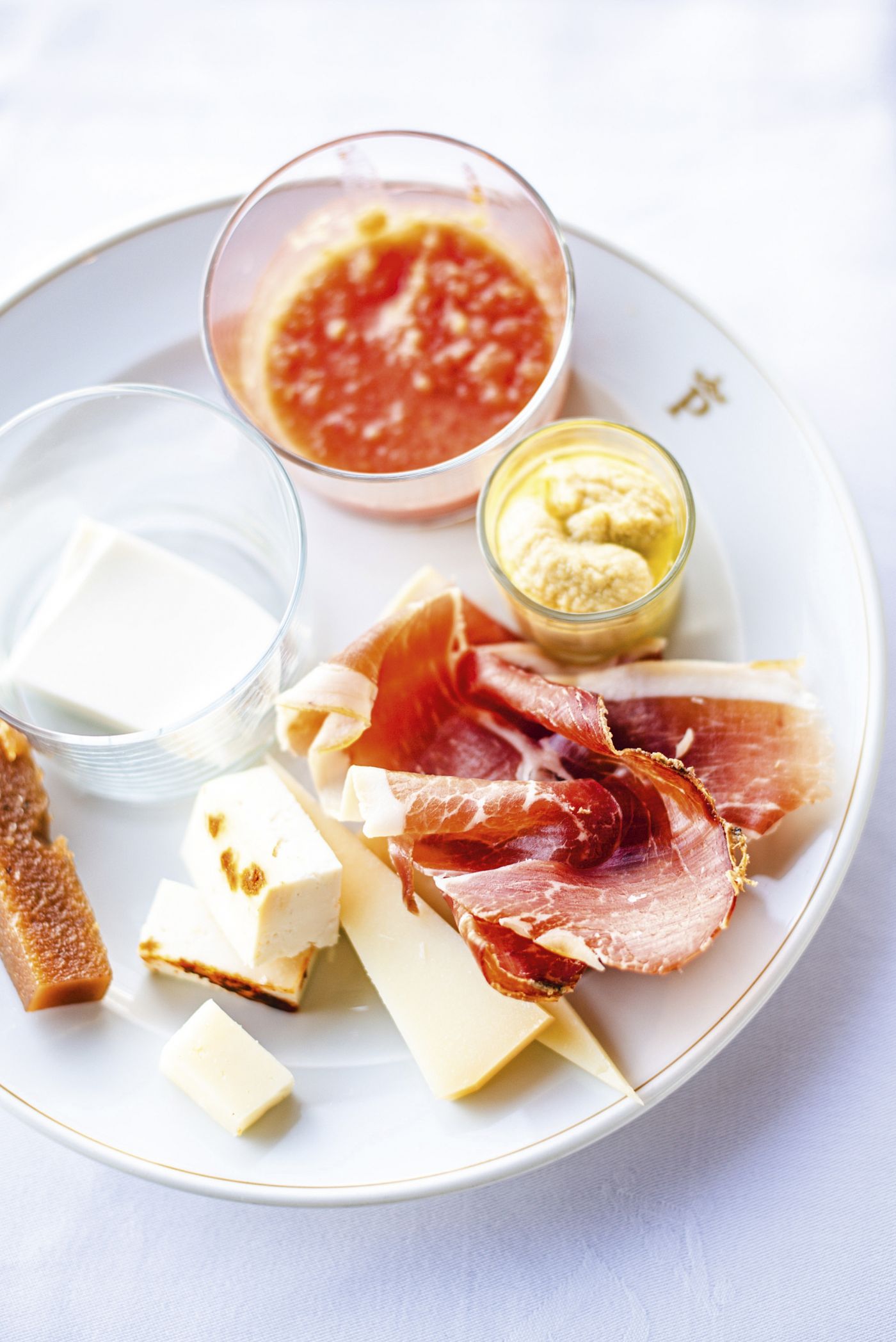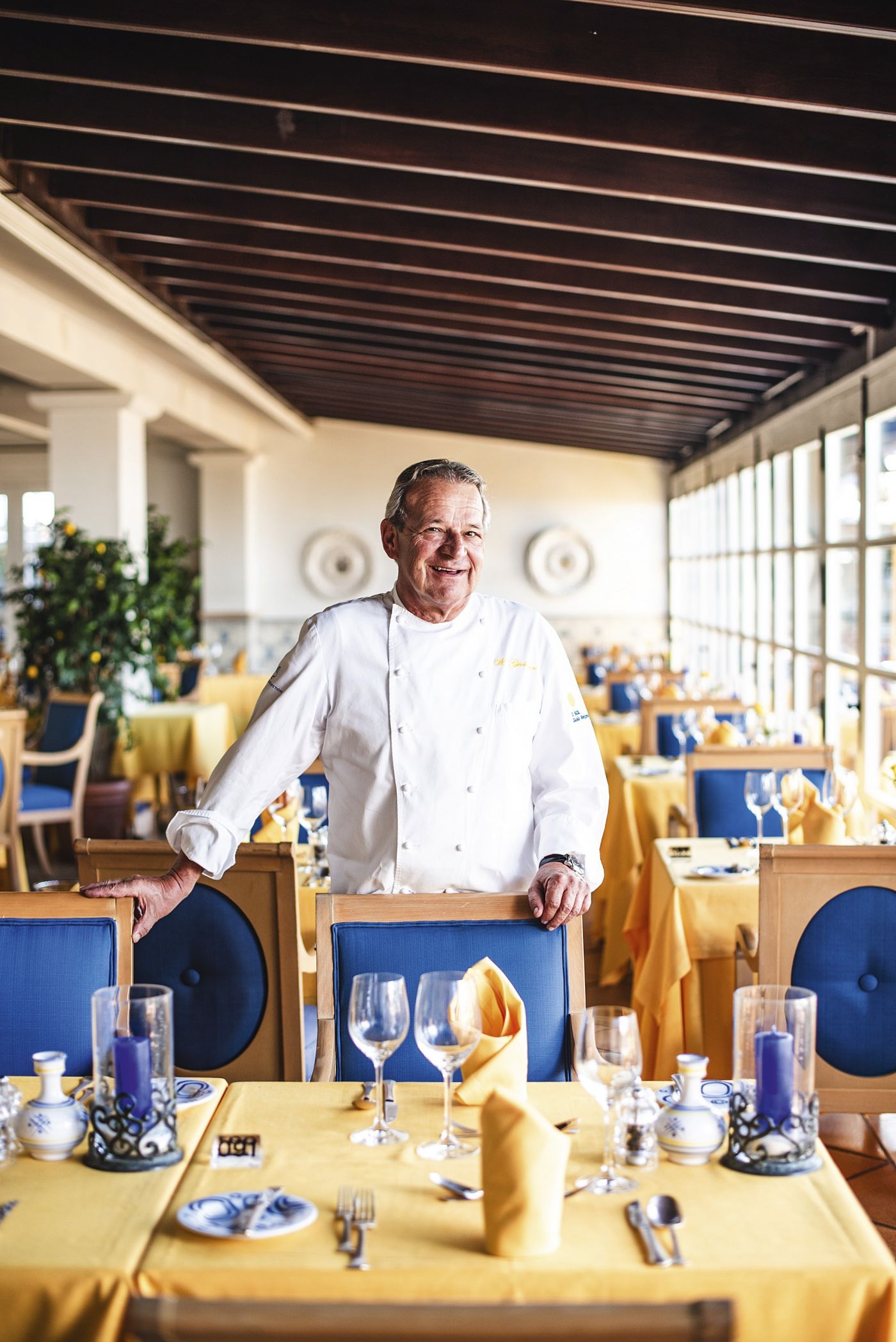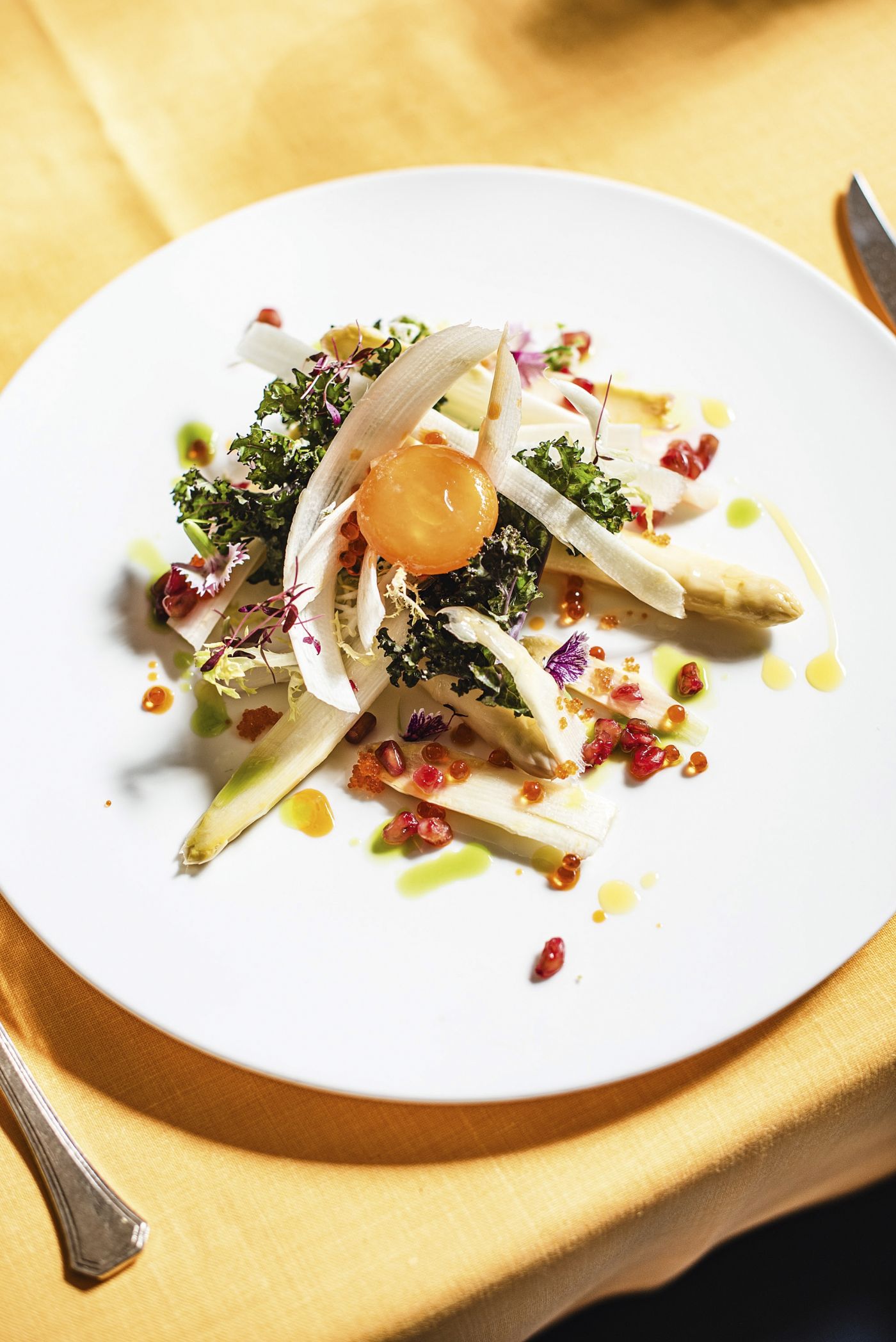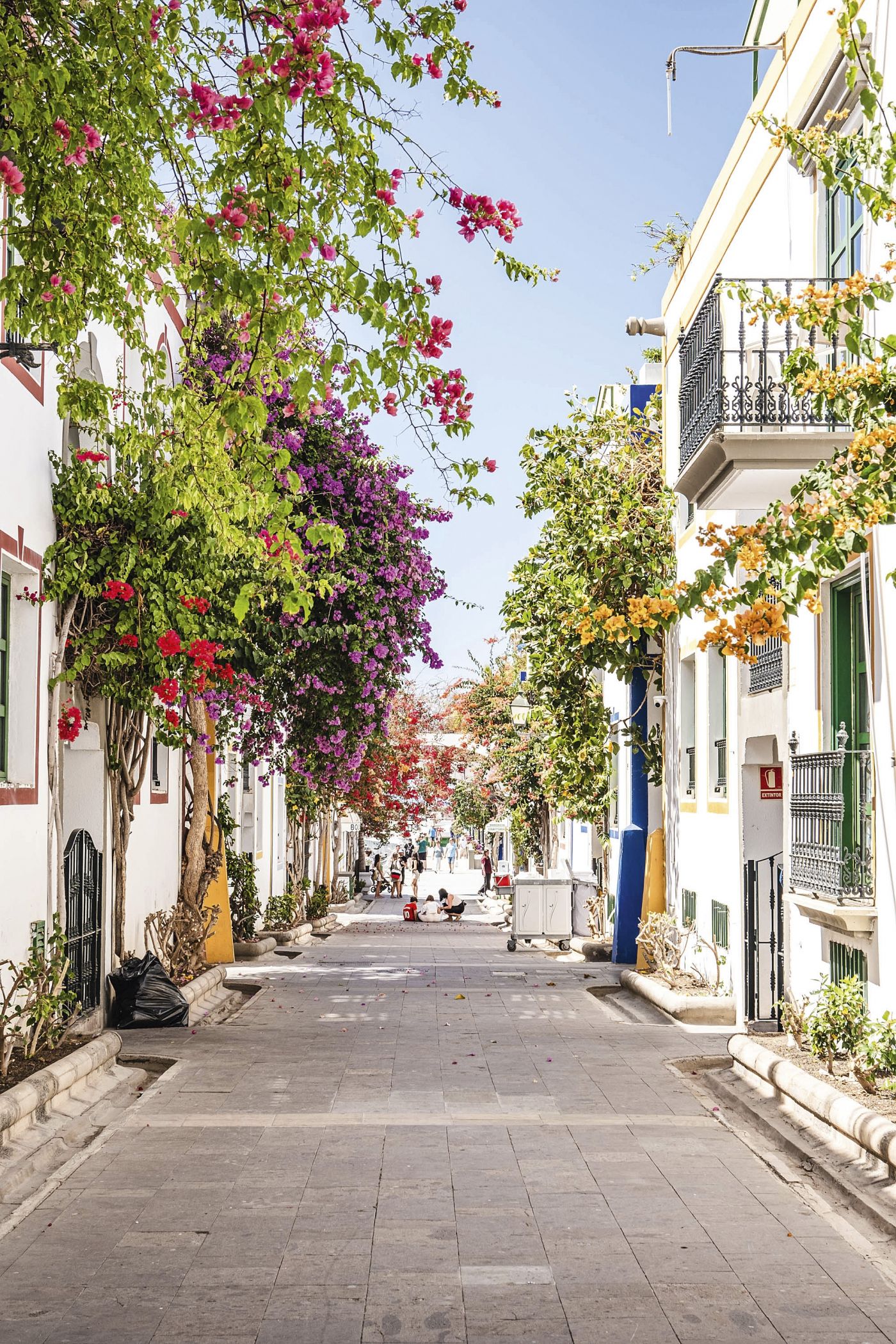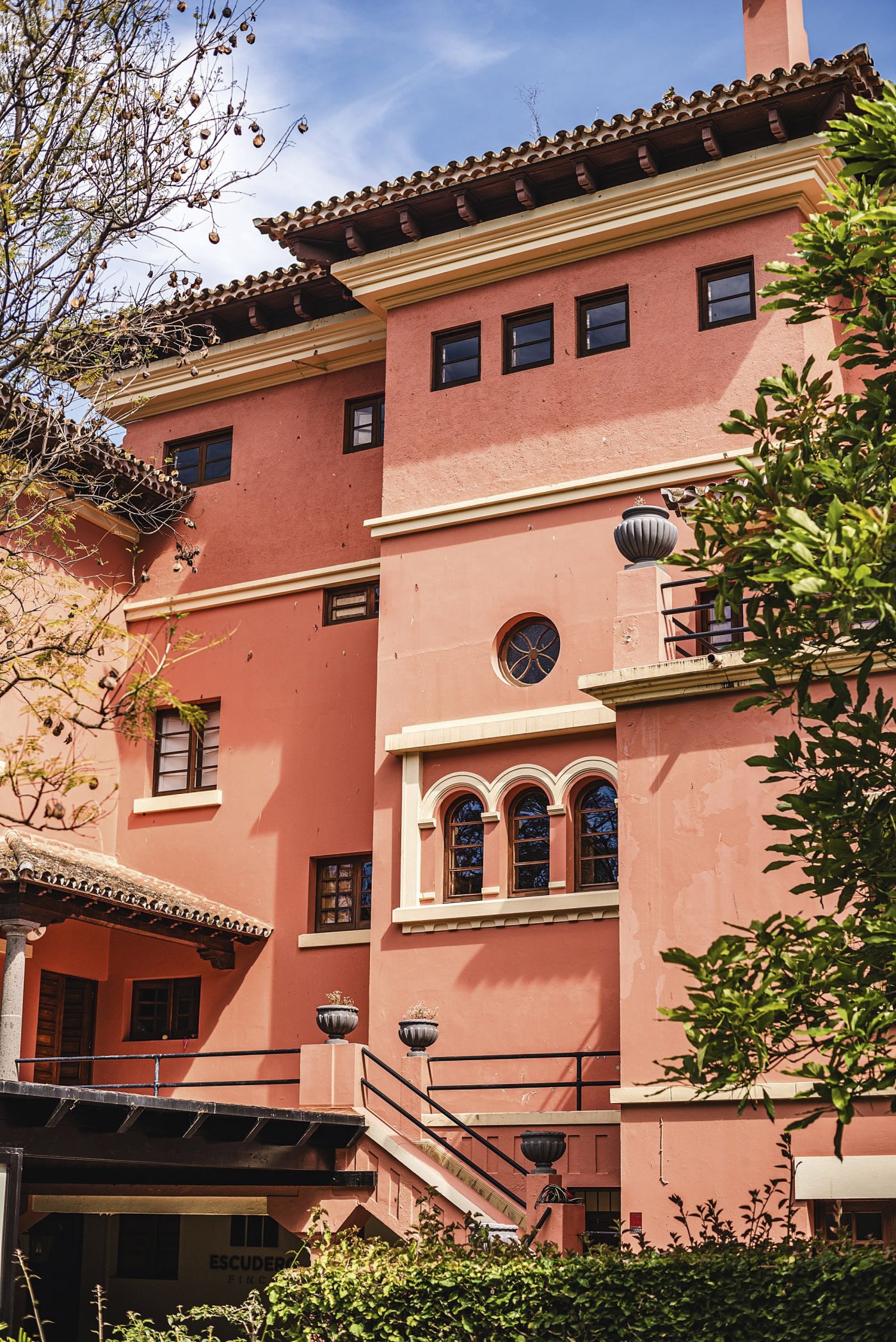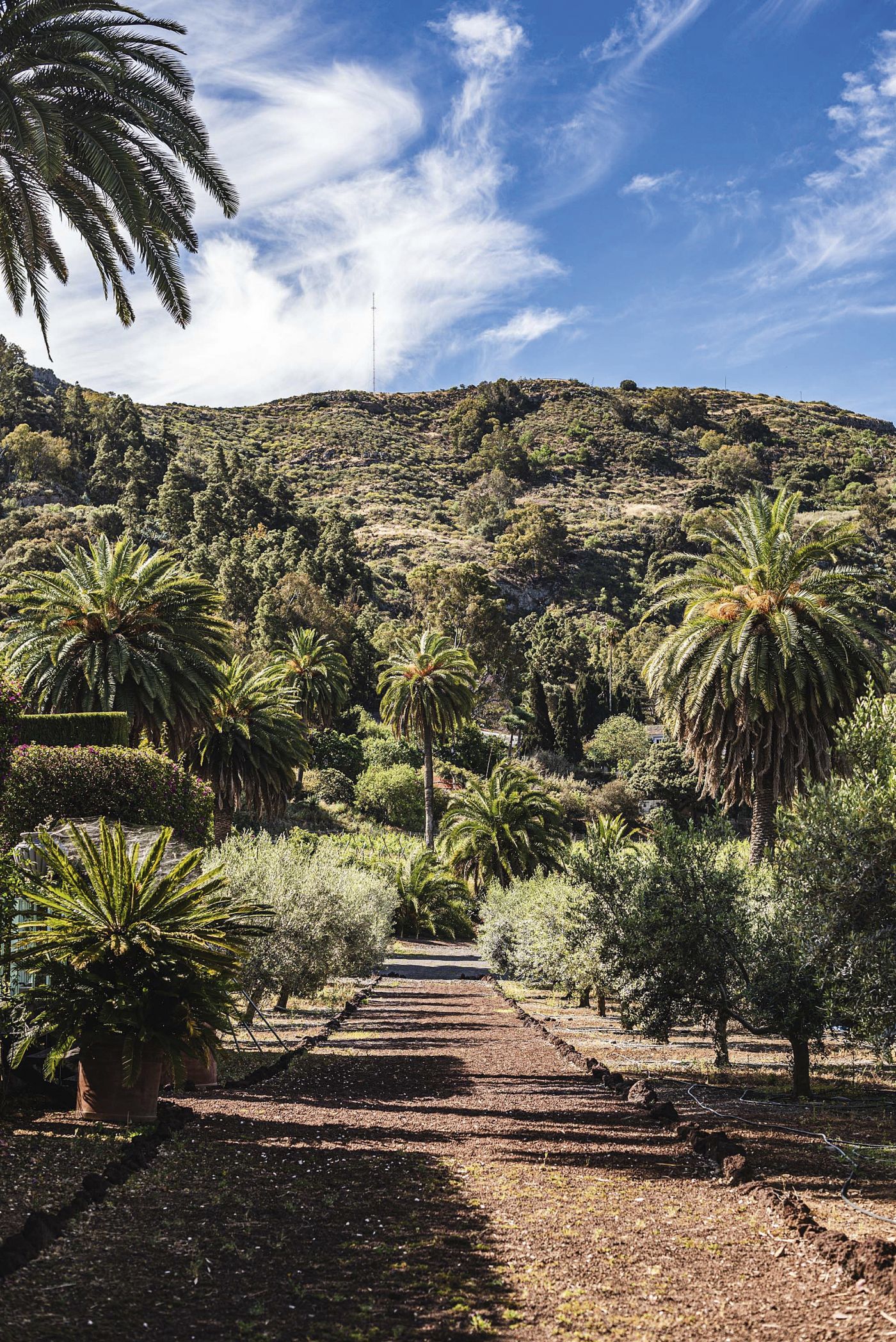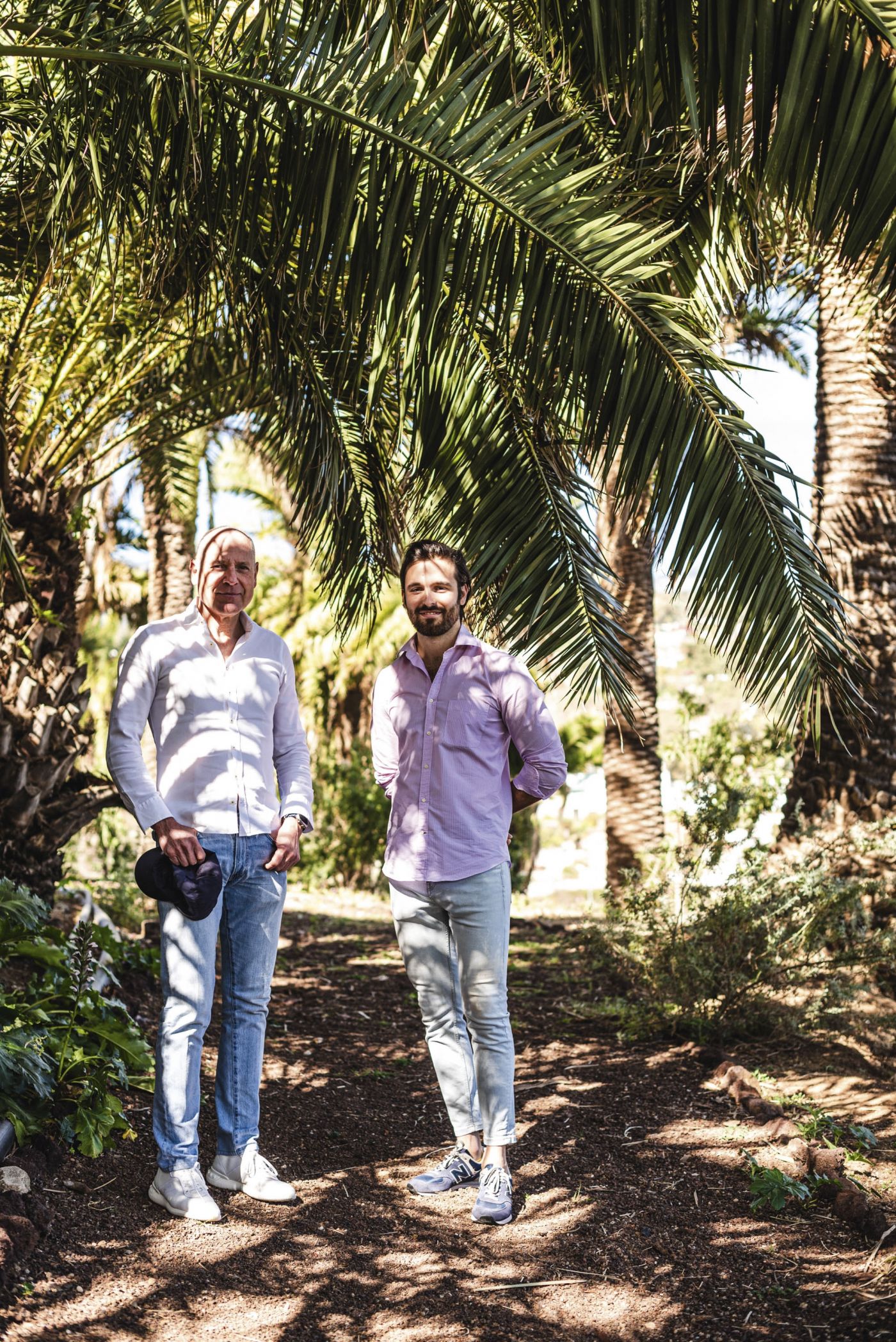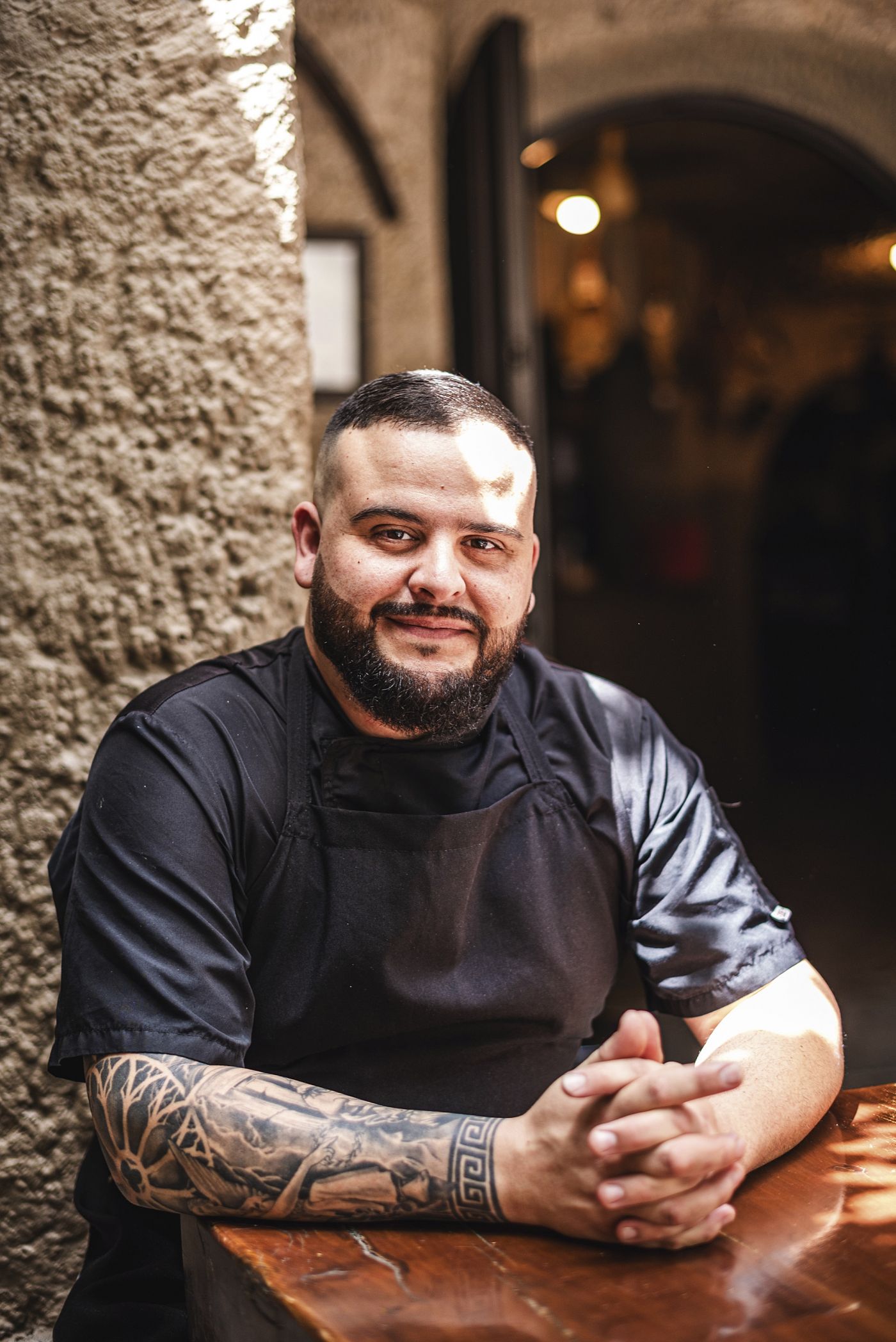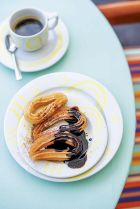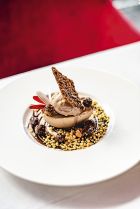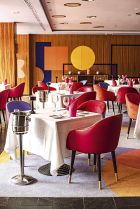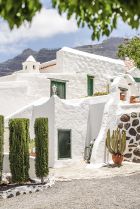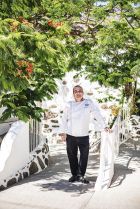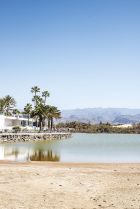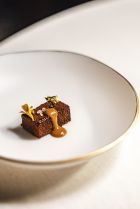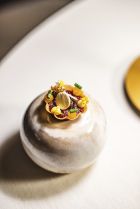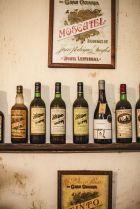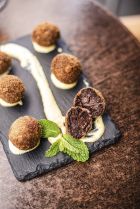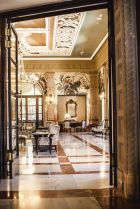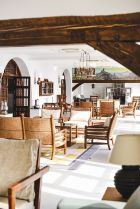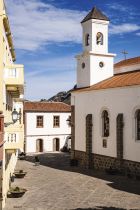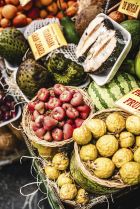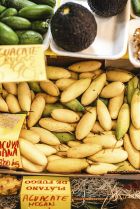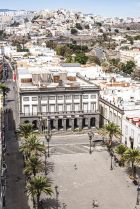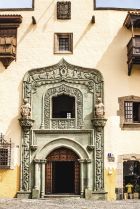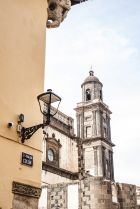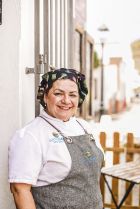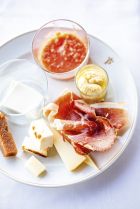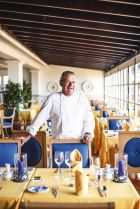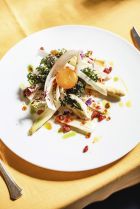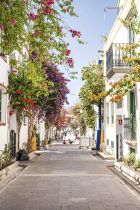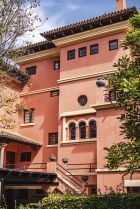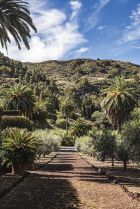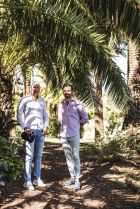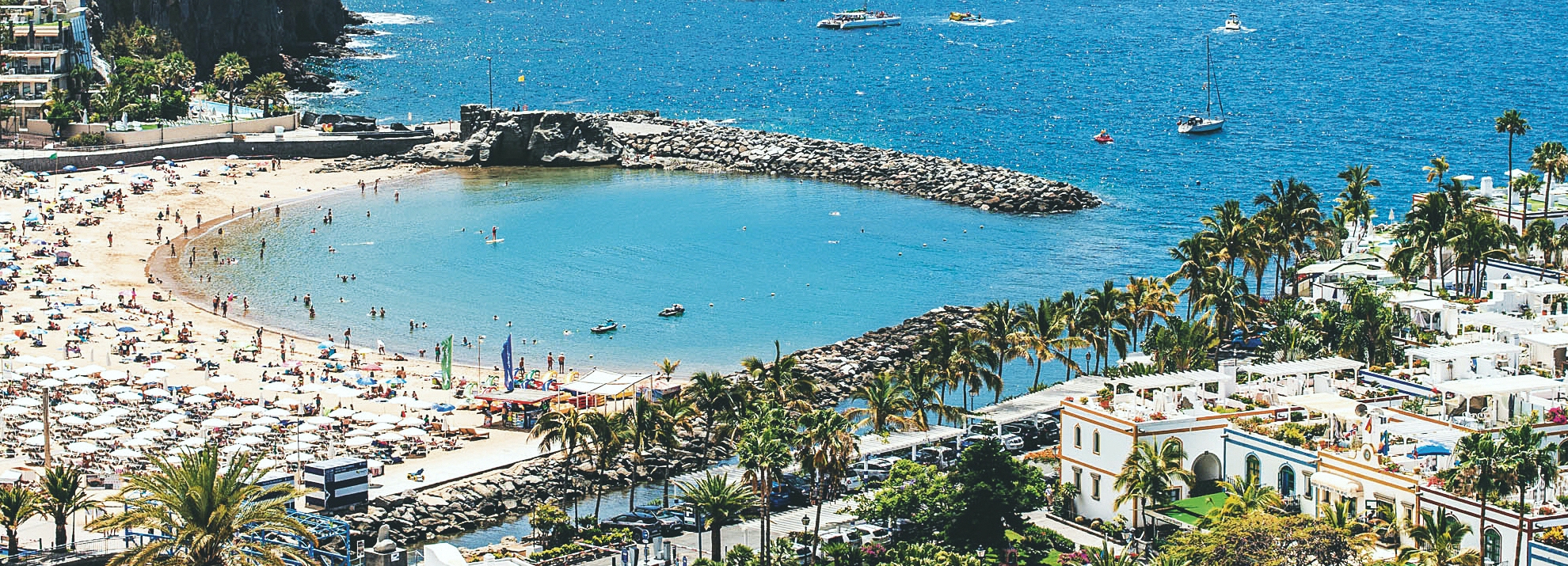
Food and Travel Review
The slogan of Ruta del Vino de Gran Canaria, 'We make wine and we bottle landscapes', feels especially fitting on an island dubbed 'a miniature continent'. From the deep-golden beaches and sandy dunes of Maspalomas in the south to the lush, dramatic north coast and the pine-covered mountain slopes of the interior, microclimates dot Gran Canaria’s coast, hills and ravines. This is expressed in wines along the entire Ruta del Vino, the first, and so far only, Spanish wine route outside the Iberian Peninsula. Established in 2021, the route is a network of local vineyards and bodegas, as well as restaurants, shops, cheese producers and expert guides. One of them, Maria Lezcano, helps visitors savour the island, sip by sip, bite by bite. ‘Our concept of tapas is slightly different from mainland Spain: we treat them as portions to share rather than individual bites,’ Maria explains, from a table under the arches of Mercato del Puerto, the Canary Islands’ first gastronomic market.
The harbourside market was erected at the end of the 19th century by the French Eiffel company, around the same time as La Luz – the largest, busiest port of the archipelago. Ever since Christopher Columbus first stopped here in 1492 en route to America, Gran Canaria has been used for refuelling and supplying ships on their way across the Atlantic. Transatlantic trade boosted both local economy and gastronomy, introducing New World produce – potatoes, tomatoes, peppers, corn and papayas – that are now pillars of Gran Canarian cooking.
‘When creating the menu, I asked my friends about the most
emblematic Canarian flavours – they pointed at bananas,
black pudding-like chorizo de Teror and mojo sauce. Mojo rojo, a
thick sauce of garlic, red pepper and pimentón, is served with almost
everything,’ says Francisco Huertas, who runs Piscos & Buches, a
bustling tapas joint in Mercado del Puerto with his father Paco. He
mixes creamy Canarian bananas (plátanos) with sweet morcilla –
which includes raisins, almonds and cinnamon – from Teror, a hilly
village in the north. Francisco rolls the mixture into crispy croquetas,
which he serves with banana mayonnaise. It may not be traditional,
but there’s no one way to make croquetas. ‘Every family has their
own recipe for croquetas, mojo and ropa vieja,’ he explains,
presenting his version of the latter. Traditionally, the slow-cooked
tomato and chickpea stew is simmered with meat: chicken, beef or
pork. Francisco makes it with tender octopus. Piscos & Buches was
the first restaurant in Gran Canaria to join Ruta del Vino. ‘I find the
wine very special; it’s truly artisanal, often made by hand. With all the
hills, our winegrowers can’t use machines for anything,’ he says.
The lesson in Gran Canarian produce continues at another
market, Mercado Central, a ten-minute drive from the port. ‘This is
the best market on the island, with chefs from all over the island
coming here for supplies,’ says Maria. The local catch: vieja – a local
type of parrot fish that lives near the rocks – and cherne – the
Canary’s most popular fish, also known as rock grouper, sit
alongside a box of round lapas in their cone-shaped shells. These
limpets – aquatic snails traditionally served with the green version
of mojo, made with garlic and coriander – were once considered
poor man’s food. Today, they’re prized for distinctive texture and
are quite rare due to strict harvest regulations.
Maria leads the way through the market alleys, pointing at
shapely green avocados from the lush south-west Valle de Mogán
and fragrant tomatoes grown in the island’s volcanic soil – Canarios’
favourite way to eat them is in a simple summer salad. The air is
sweet-scented with papayas, passion fruits, prickly pears and
bananas: bright green, deep yellow and maroon. Pink pods of
borlotti beans are piled next to a large oblong squash, cut and sold
in smaller pieces for potaje, a Canarian stew that is different in every
household. ‘Cooking is an art form and we have many different
artists,’ says Maria. ‘Potaje will always have a few different vegetables
like beans, corn and potatoes, and my mum makes it with lentils
and chorizo.’ The best chorizo is made by Los Nueces in Teror. It’s
perfect for spreading on crunchy baguettes – every bar in Teror
serves bocadillos de chorizo. ‘Coming for a bocadillo de chorizo
with Clipper – a fizzy strawberry drink produced since the Fifties –
automatically qualifies you for a Canarian passport,’ Maria laughs.
Local ingredients are cherished by the new wave of chefs.
Abraham Otrega, chef-owner of Tabaiba, describes his cooking
style as ‘evolutionary Canary Island cuisine’. Located just a few
metres from the busy promenade of Las Canteras, one of the best
urban beaches in Spain, the restaurant has recently been awarded
its first Michelin star. Abraham’s tasting menu is a colourful journey
through the island’s landscapes, starting with a trio of enyesques –
small snacks typical to Gran Canaria’s Las Palmas province – that
include his grandmother’s chicken broth and carajacas, a local speciality of fried beef liver, and ends with a dessert
composed of sheep’s-milk ice cream and three kinds of local honey.
The wine list includes numerous Gran Canarian producers, and over
90 per cent of ingredients used in the kitchen are sourced in the
islands. ‘I love working with local ingredients, especially our seafood
and gofio,’ says Abraham. Gofio, a flour made from roasted grains
– typically corn – dates back to the first inhabitants of the islands,
who migrated from North Africa centuries before the Spanish.
Ever since the Spanish conquest at the end of the 15th century, the islands’ wealth built on transatlantic trade and sugarcane export led to attacks by pirates and privateers: Sir Francis Drake raided Las Palmas de Gran Canaria in 1585. Known as the Sugar Islands throughout the 16th century, the islands then switched to wine growing, as sugarcane plantations had been moved to the cheaper Caribbean. The wine soon became world-renowned for its quality – Shakespeare even alludes to ‘canary’ in his works.
‘We stopped being competitive,’ says Maria. ‘Over the centuries, the same happened with other crops. The pattern kept repeating until we found tourism.’ The first tourists came around the end of the 19th century: British cruise ships brought passengers, encouraged by their doctors to seek the temperate climate.
With burgeoning tourism, few focused on winemaking but today, the new wave of Gran Canarian cuisine and the renaissance of local wine go hand in hand. Tabaiba’s sommelier, Manuel Suárez, says the best winemaker of the archipelago is based in Gran Canaria: Carmelo Peña Santana preserves local grapes and revives ancient abandoned vineyards with his wine project, Bien de Altura. Nearby, the one-Michelin-starred Poemas by Hermanos Padrón has a wine pairing built entirely on wines from Gran Canaria. It was created by their sommelier, Rafael Hurtado. ‘This is an interesting moment for Gran Canarian wines,’ he says. ‘In the past 10 years I’ve seen many new winemakers experimenting and getting great results.’
The last major volcanic eruption on the island happened 1,900 years ago and created the 200m deep, 1,000m wide Caldera de Bandama, one of the first places on the island where grapes had been cultivated. Caldera de Bandama is now a protected area, but grapes are still grown nearby. Opened in 1912 by Don Juan Rodriguez Quegles, an affluent founder of the first bank in the Canaries, Bodega San Juan was one of the harbingers of wine tourism, with British travellers (famously including Agatha Christie) stopping for vineyard tours on the way to the Bandama volcanic crater. Over the years, the family had stopped making wine, but in 2017 Cristina Millán – Don Juan’s great-great- granddaughter – revived the production. She hired Carmelo Peña Santana as a consultant and they planted Gran Canarian varieties of listán negro and negramoll. Cristina’s organic wine holds Gran Canarian DO (denominación de origen). Established in 2005, it requires winemakers to use native grape varieties – others include tintilla, listán blanco, moscatel de Alejandría and vijariego blanco. ‘I think Canarian wines are different from any in the world,’ says Cristina, leading the way, cherry-red wine in hand, through a shady garden planted with cacti, agave and palm trees. ‘The combination of indigenous grapes, subtropical climate and volcanic soil gives our wines a distinct mineral taste. They’re very fruity: you can taste red berries in vinos tinto, guava and other tropical fruits in blancos.’ From the hills of Monte Lentiscal, forest roads are flanked by bushy eucalyptus and chestnut trees whose fruit will be roasting on roadside stalls in October and November. This side of the island is lush as the mountains – Morro de la Agujereada reaches over 1,950m above sea level – keep trade winds in the north. Higher up, the landscape reveals the flora of a pine forest: broom, wild fennel and allium, pink bindweed, purple-flowered sage, nasturtium blossom and violet salsify. Some of these feed the sheep, whose varied diet can be tasted in local cheese. The Unesco-protected landscape of the Sacred Mountains of Gran Canaria hides cave settlements – habitats, granaries and cisterns – as a reminder of pre-Hispanic culture. Among them, rugged Roque Bentayga houses an ancient temple.
Sandra Armas grows grapes within the biosphere reserve of
Parque Rural del Nublo, the cellar and tasting room arranged in a
200-year-old cave expanded by her father, Juan – 91 years old and
still working. ‘The constant temperature and humidity are perfect
for storing wine,’ says Sandra. Each wine is named after the average
altitude on which the grapes were grown. The white 1318, for
example, a blend of vijariego blanco and albillo criollo, is fruity and
floral, with bold acidity. The view is of neat rows of bright green
vines, winding roads, palm trees and purple, pine-covered slopes,
with Roque Bentayga towering above and, on a clear day, Tenerife’s
Mount Teide looming on the horizon. Heading south to the sandy
beaches, magnificent dunes and luscious resorts of Maspalomas,
you can only feel glad this landscape has been bottled.
Where to stay

Parador de Cruz de Tejeda A hideaway set at 1,560m above sea level near Cruz de Tejeda — a stone cross that marks a crossroad of historic trails, Caminos Reales, near the central point of the island. Most of the 43 rooms have spectacular views of the mountains and the iconic formations of Roque Bentayga and Roque Nublo. They can also be enjoyed from the bar, the restaurant and the infinity pool of the hotel’s luscious spa. First opened in 1946, the building and its interiors were designed by a duo of Martín-Fernández de la Torre brothers, Miguel and Néstor. Doubles from £105. Cruz de Tejeda, 00 34 928 012500, paradores.es
Santa Catalina, a Royal Hideaway Hotel Built in 1890 by the British and
designed by Scottish architect James Marjoribanks MacLaren, the five-star
Santa Catalina is the oldest hotel on the Canary Islands. Its opulent
interiors blend colonial and North African styles, with original marble
floors, 19th-century murals and balconies carved in wood. Reopened in
2019 after a thorough refurbishment, the hotel boasts a privileged
location inside the lush Doramas Park. It is home to two restaurants with
Michelin stars, Poemas by Hermanos Padrón and Muxgo. Doubles from
£142. C León y Castillo 227, Las Palmas, 00 34 928 243040, barcelo.com
Seaside Grand Hotel Residencia Minutes away from Maspalomas beach
and the iconic sand dunes, this luxurious five-star hotel was designed in
colonial style and opened in 2000. There are 94 rooms, adorned with
elegant teak furniture and Moorish-style bathrooms, spread across
two-storey whitewashed villas dotted with colourful bougainvillea. The
hotel has a relaxed, intimate feel and the spa features a saltwater
thalassotherapy pool and saunas. There’s also an excellent restaurant run
by Wolfgang Grobauer, who prepares fresh, light dishes with fruit and
vegetables that come from a local finca, Montaña la Data, all served up
on a terrace overlooking a palm-tree oasis – making a sunset dinner a
delightful event. Doubles from £320. Avenida del Oasis 32, Maspalomas,
00 34 928 723100, grand-hotel-residencia.com
Seaside Palm Beach Nestled within a nature reserve and surrounded by an oasis of palm trees, Seaside Palm Beach first opened in 1975 and underwent a redesign by the renowned Parisian architect Alberto Pinto in 2002. With 328 rooms, three restaurants, two bars, five swimming pools and a spa, the current design is a celebration of bold, colourful Seventies style. Doubles from £197. Avenida del Oasis, Maspalomas, 00 34 928 721032, hotel-palm-beach.com
Travel Information
Gran Canaria is one of the Canary Islands, an archipelago off the coast of north-west Africa; the capital is Las Palmas de Gran Canaria. Around a four-hour flight from the UK, Gran Canaria has average temperatures of 24C all year. The official language is Spanish and currency is the Euro. Time is GMT.
GETTING THERE
BA fly from London Heathrow to Gran Canaria. britishairways.com
easyJet also fly from Bristol and Manchester. easyjet.com
GETTING AROUND
Public transport There’s a good network of city buses in the capital,
and taxis are generally easy to hail. You can also travel further afield by bus,
with Global buses operating all around the island. guaguasglobal.com
RESOURCES
Tourism Gran Canaria is the official tourism board with information on what
to see and do and where to stay, to help you plan your trip. grancanaria.com
Where to eat

Prices are per person for three courses excluding drinks, unless stated
Arte-Gaia Restaurante Overlooking the main square of the picturesque
village of Artenara, Arte-Gaia is run by Juana Teresa Gil Falcon. Having
grown up in Artenara, she moved back to the mountains from Las Palmas
de Gran Canaria in 2002 and started a farm that supplies vegetables for
the kitchen. Many dishes are based on family recipes, like grandmother
Isabel’s potaje de verduras and mother Sisita’s garbanzada (chickpea
and Canarian black pork stew), the signature dish. Chef Lidia Cabrera
Rodríguez specialises in classic Canarian dishes, like papas arrugadas,
rabbit stew. From £18. Plaza San Matías 2, Artenara, 00 34 660 150487
Esencia One of three Seaside Palm Beach restaurants, Esencia serves Mediterranean food made with seasonal Canarian produce — 90 per cent of ingredients used in the kitchen are local. Highlights include lobster ravioli, and banana cream with chocolate crumble. From £40. Avenida del Oasis, Maspalomas, 00 34 928 721032, hotel-palm-beach.com
Piscos & Buches Under the arches of Mercado del Puerto, this friendly, family-run place serves inventive tapas, draught beer and Canarian wines. Father-son team Paco and Francisco Huertas craft plates together with head chef, Juan José Ramirez. Ropa vieja de pulpo (octopus stew with chickpeas and potatoes) and queso asado (grilled cheese with honey, gofio and almonds) are emblematic. Tapas from £4. Calle Albareda 76, Las Palmas, 00 349 284 64373, piscosybuches.co
Poemas by Hermanos Padrón This one-Michelin-starred restaurant
offers tasting menus by Padrón brothers Juan Carlos and Jonathan,
expertly executed by chef Adrián Garcia. Dishes might include turrón of
Canary Island morcilla and almond praline, and smoked eel benedictine
with quail’s egg and elvers. Seven-course tasting menu £77. Calle León y
Castillo 227, Las Palmas, 00 34 928 243041, restaurantepoemas.com
Tabaiba Taking its name from a native flower, this Michelin-starred restaurant offers two tasting menus that will take you on a journey around the island’s landscapes, history and flavours: think tomato ice cream with garlic foam and red vinegar granita, or slow-cooked lamb, dandelion toffee sauce, pine tree cream and pressed curd made of Flor de Guía cheese. 12-course tasting menu £95. Calle Portugal 79, Las Palmas, 00 34 928 027055, tabaibarestaurante.com
Tagoror Restaurant Carved into the rocks in local cave-house style, this is one of most visited restaurants in the Canary islands. Choose between the coolness of the cave and shady outside seating with views of the ravine. Dishes by chef Guejarassim Caballero Rodríguez include potaje de berros (watercress soup), grilled morcilla and ropa vieja. From £15. Montaña las Tierras, 21 Ingenio, 00 34 928 172 013, restaurantetagoror.com
Valle de Mogán In a 200-year-old farmhouse, Canarian ingredients meet South-Asian flavours – try limpets with sea urchin and passion fruit, or potatoes with mojo foam and cactus glaze. Sip cava with mango from the orchard or homemade spiced vermouth – tours of cactus garden, mango plantation and vermouth factory available too. From £35. Los Pasitos 2, Mogán, 00 34 928 568649, valledemogan.com mogantour.com
Food Glossary
- Mojo rojo
- A thick sauce of garlic, red pepper and pimentón
- Vieja
- A local type of parrot fish
- Cherne
- The Canary's most popular fish, also known as rock grouper.
- Potaje
- A Canarian stew that is different in every household. Potaje will always have a few different vegetables like beans, corn and potatoes.
Get Premium access to all the latest content online
Subscribe and view full print editions online... Subscribe


